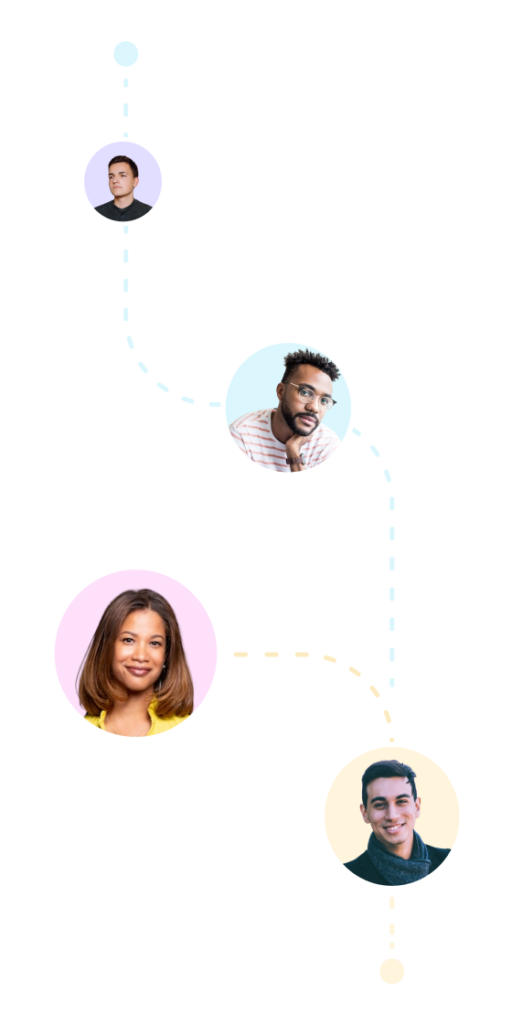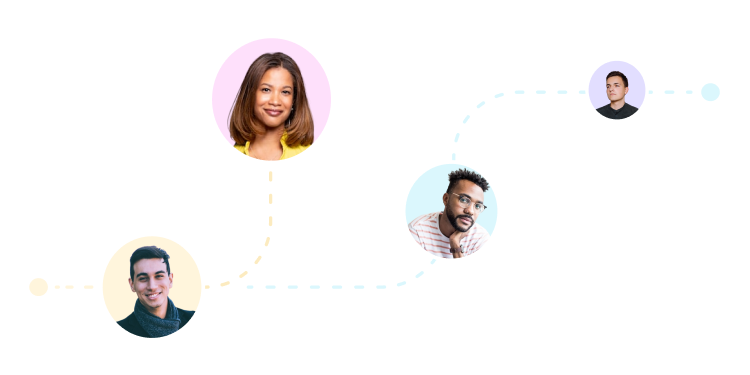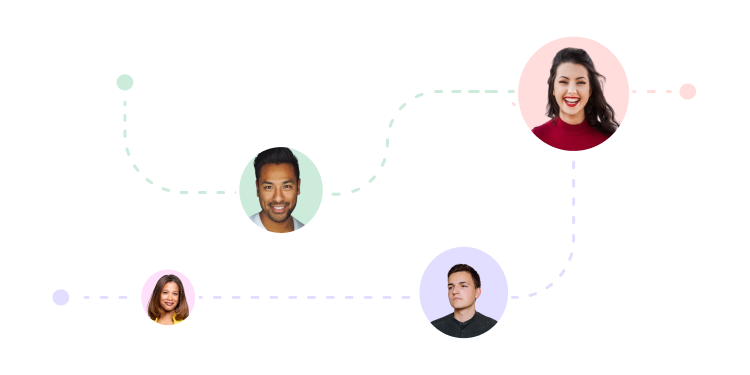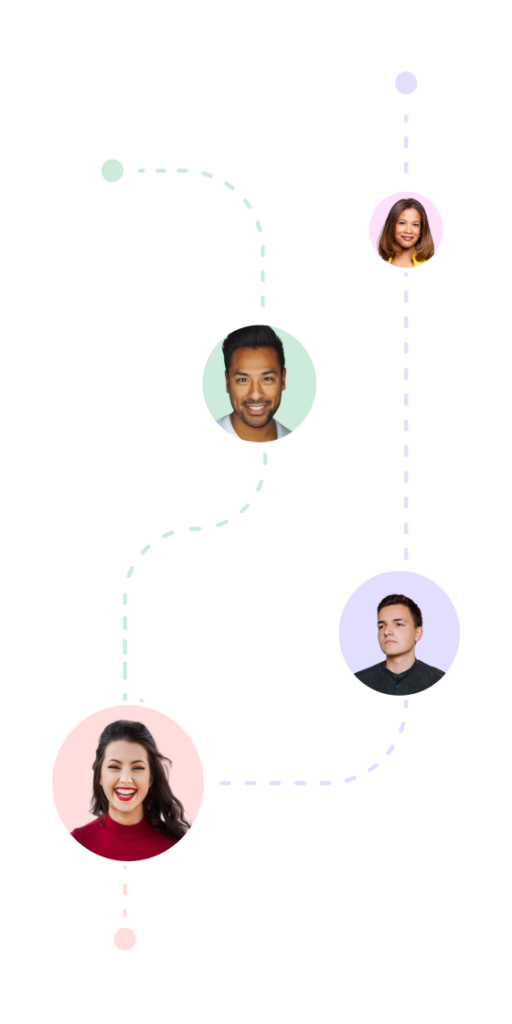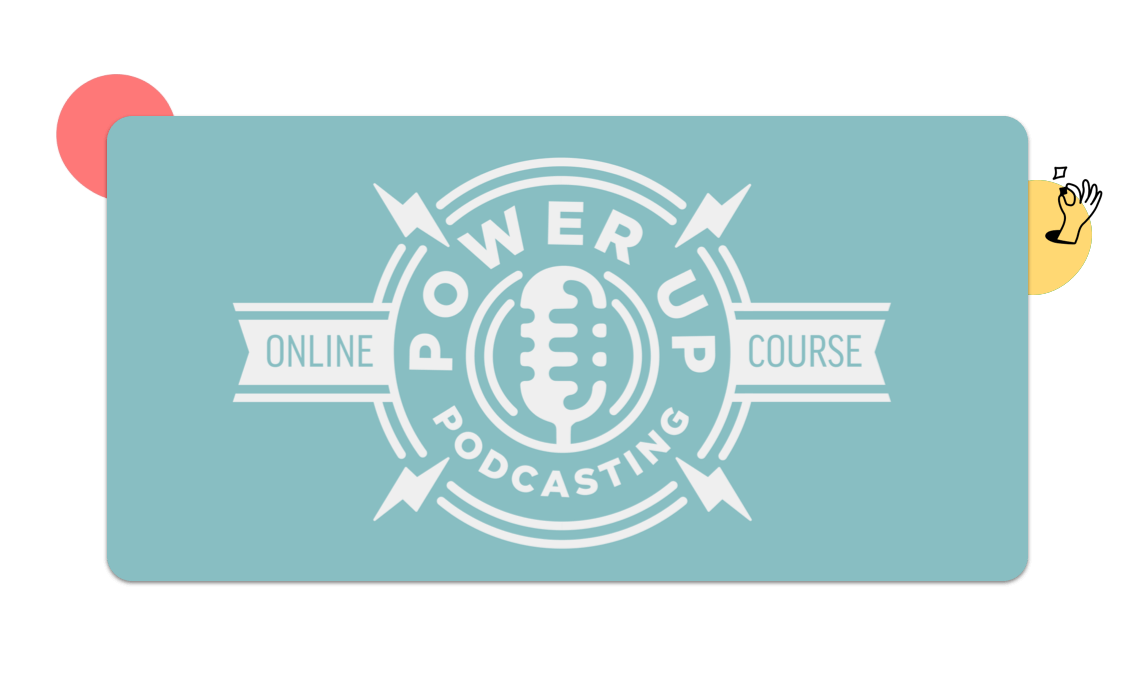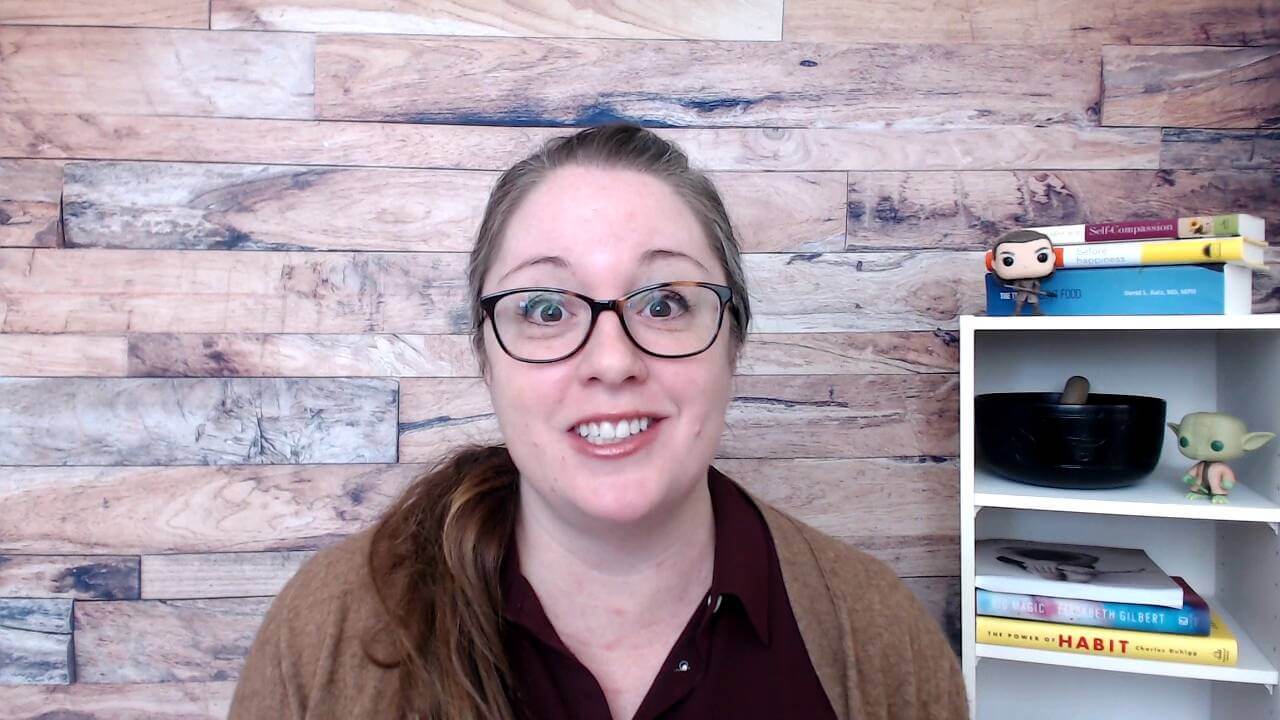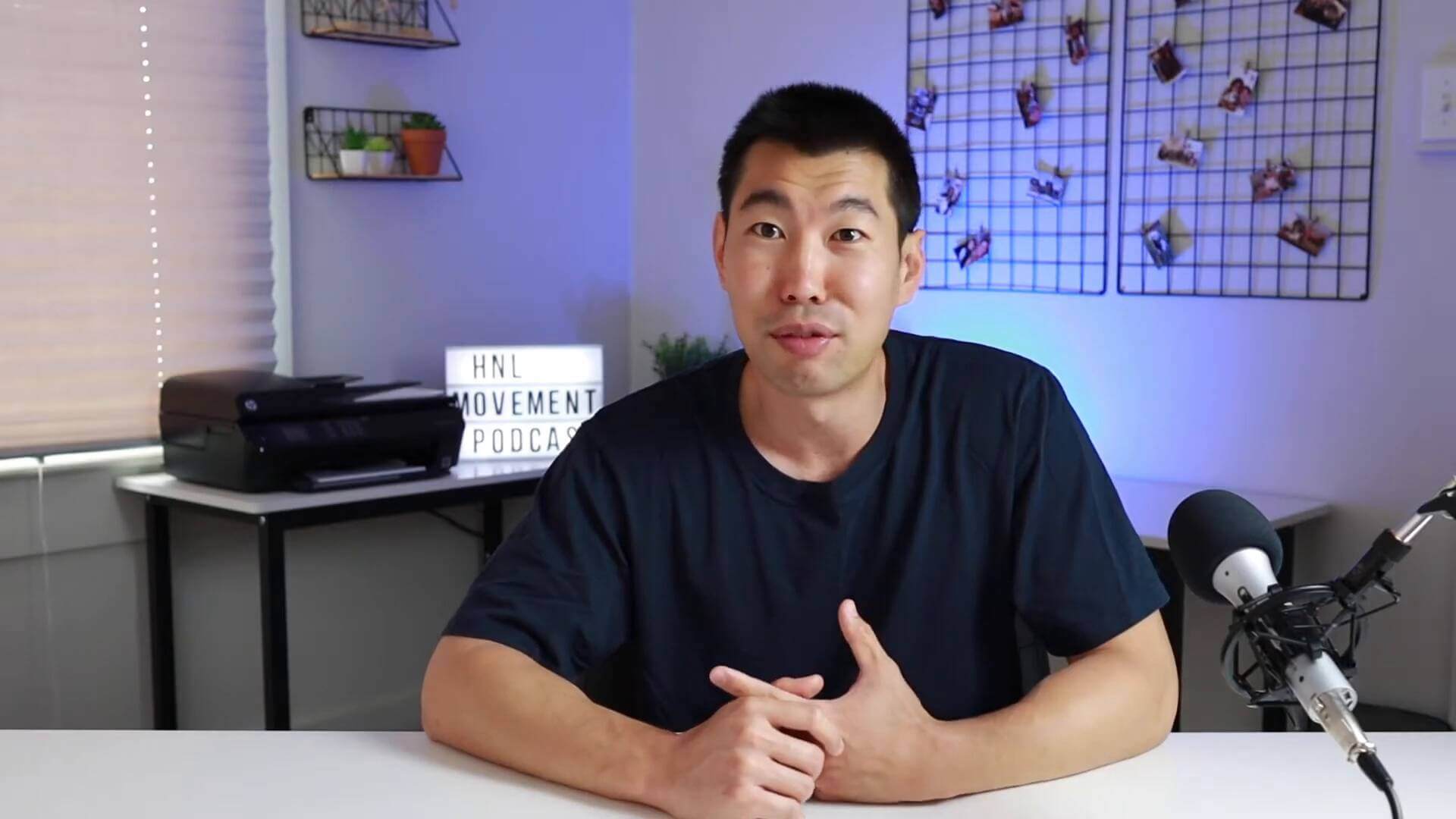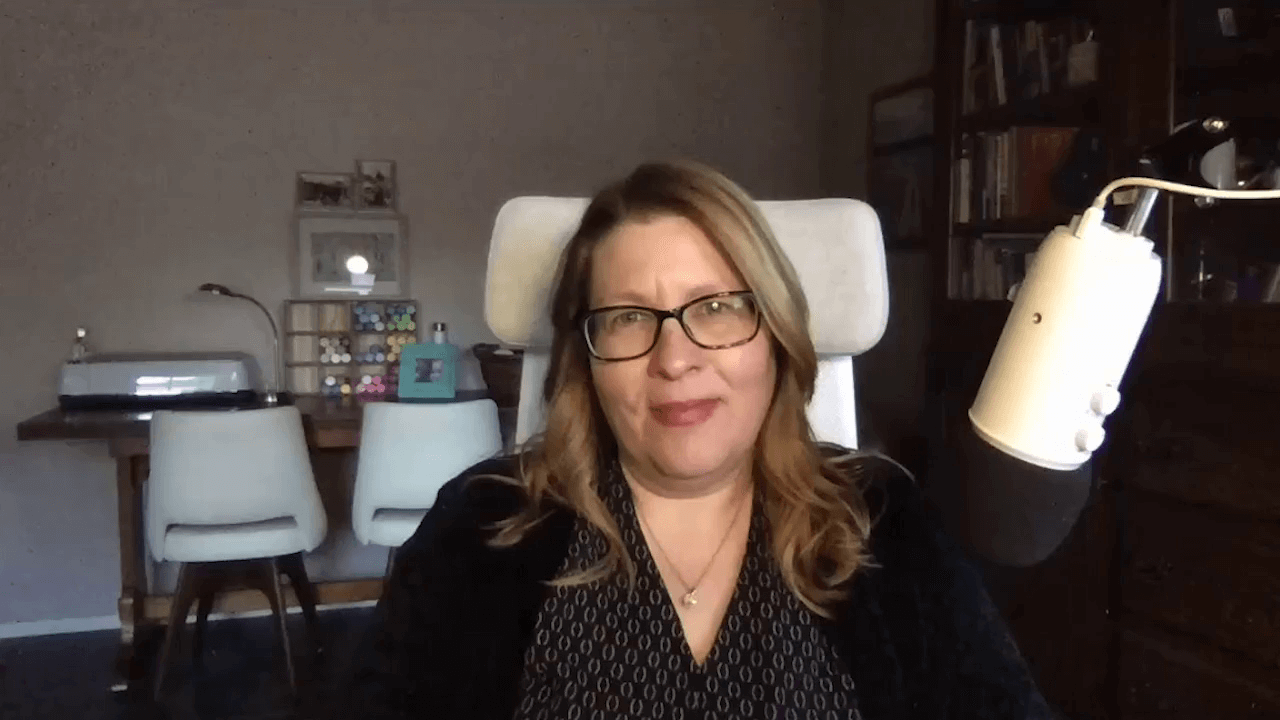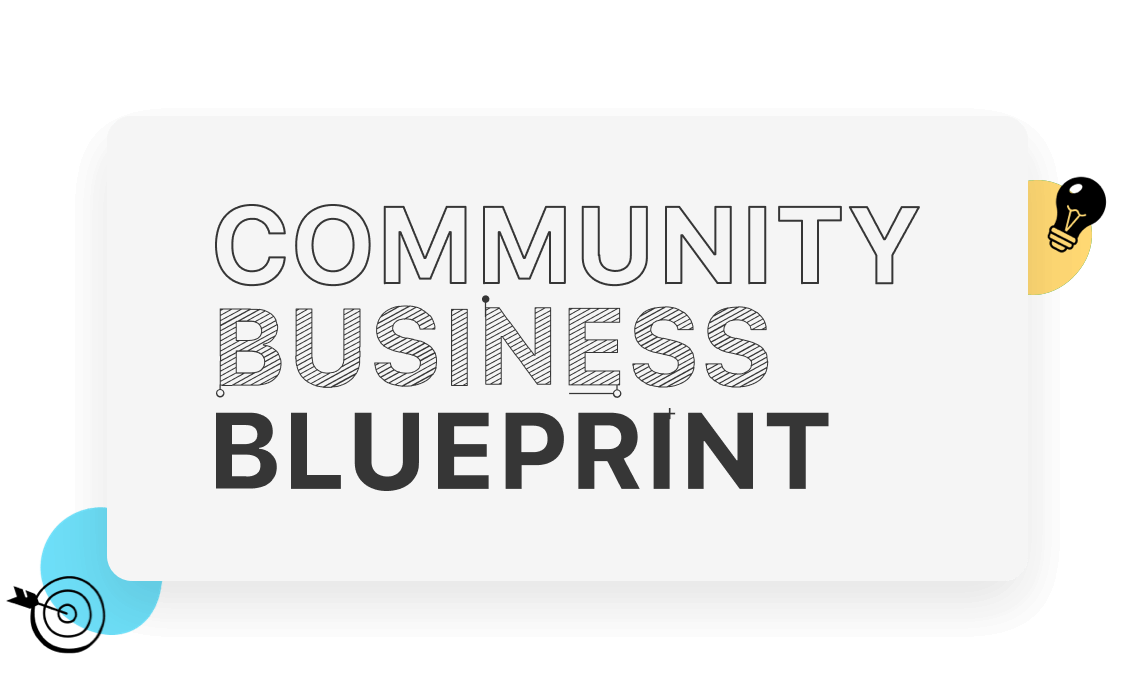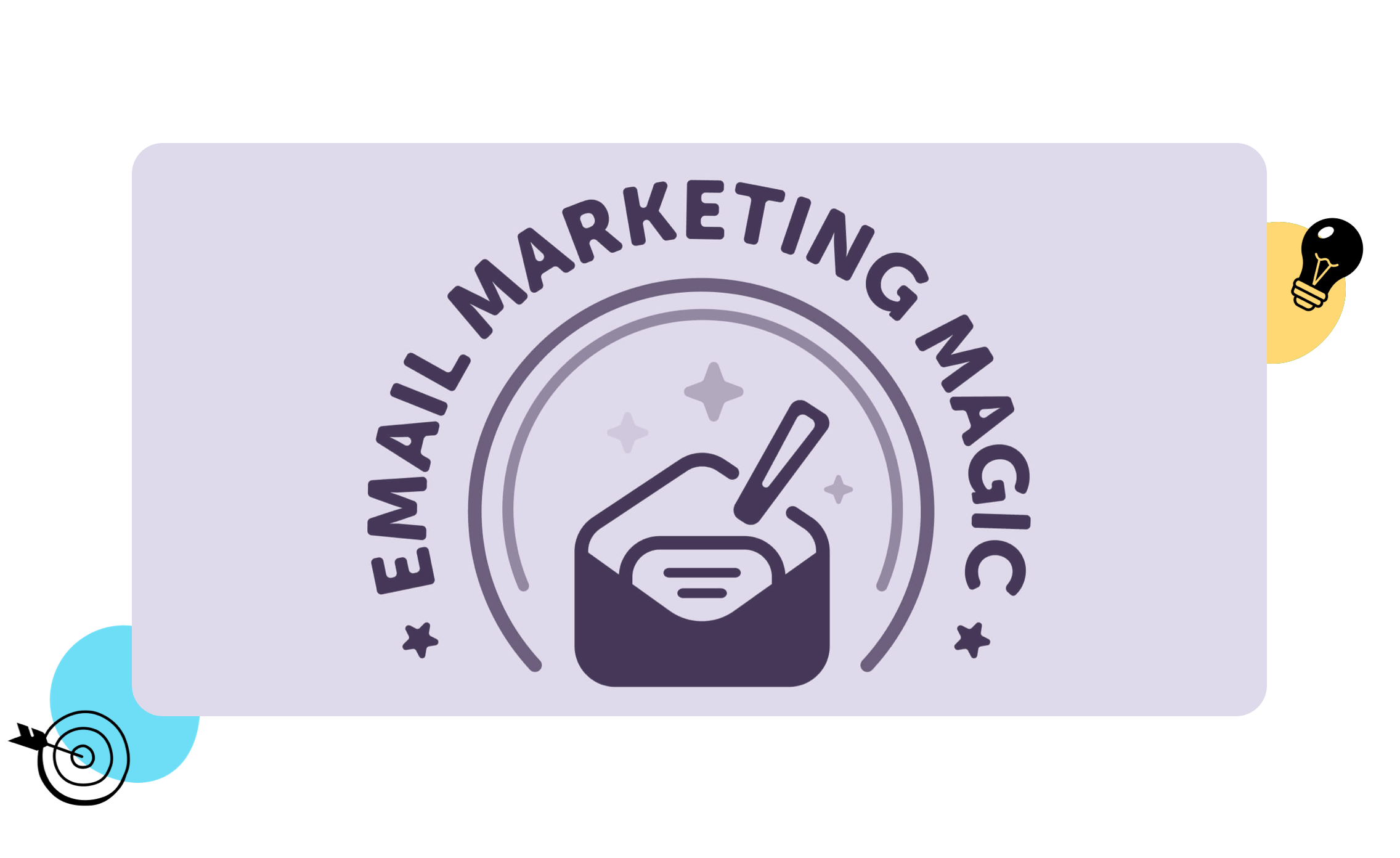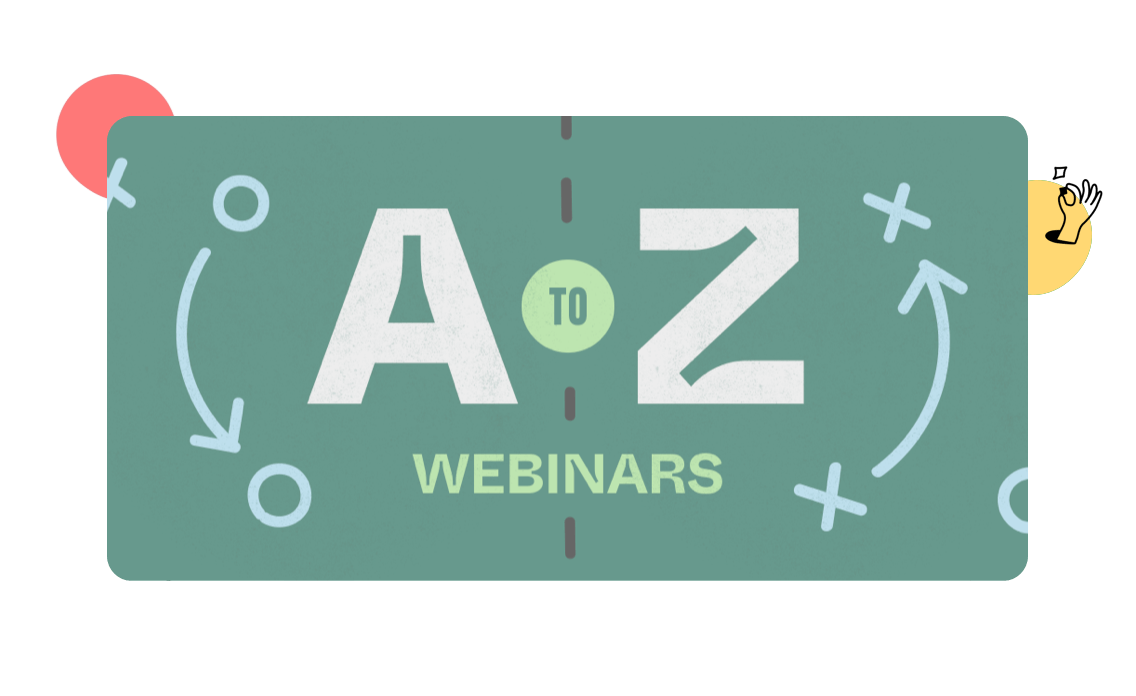Brian Luebben soared to the top of the corporate ladder only to realize he preferred a different view.
The post How to Quit Your Corporate Job and Travel Full-time appeared first on Smart Passive Income.
]]>Brian Luebben had soared to the top of the corporate ladder, landing a prestigious position in a Fortune 500 Sales Organization in his mid-twenties and earning a substantial salary.
But then, a startling truth hit him: he did not want this life.
He didn’t just want financial success, he wanted to quit his corporate job and travel the world full-time with the freedom to shape his life and career as his own boss.
With the success of his podcast, which evolved into his growing media company, Brian turned his vision into reality.
Today, he lives his dream, traveling the world, earning passive income, and pursuing projects close to his heart — like his Action Academy. Brian’s story epitomizes entrepreneurial success fused with personal fulfillment.
Brian recently sat down with Pat Flynn to share his story on The Smart Passive Income Podcast.
Determined to align his career with his ideal lifestyle, Brian transitioned from corporate life to full-time traveler by following this gameplan:
- Determining his ideal vision for the future
- Establishing a solid financial foundation
- Creating content and collecting client data
- Developing a product tailored to his audience’s needs
- Pivoting his business strategy in response to customer feedback
- Generating recurring revenue
- Seeking out growth opportunities for the future
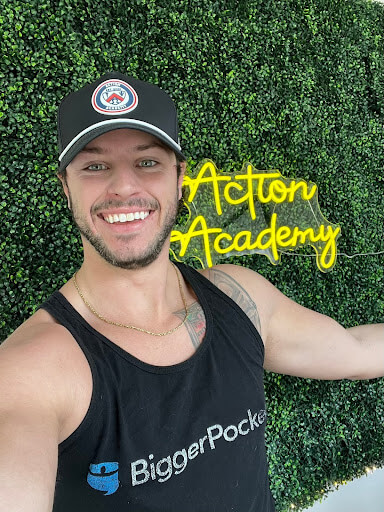
Planning Your Job Exit
Establish Your Ideal Vision for the Future
So how do you determine your next steps after quitting your job to travel? How do you even start to replace a corporate salary? With so many unknowns, there was one thing that Brian was certain of: instead of running away from something, he wanted to run toward something.
This meant crafting a three-year “vivid vision” for both his personal and professional aspirations. By committing his dreams to paper, he gained a clear roadmap.
Here's the picture he painted:
“I wake up in the morning and I can feel the hot cobblestones of this balcony on my feet and I look out and I can see the ocean. I don’t have calls all morning, but in the afternoon I’ve got meetings with my team. I can make money anywhere in the world with a Mac and a mic.”
A Financial Foundation for Full-Time Travel
Now that Brian had a clear destination in mind, he needed to map out the route to get there. His next step, which he calls “building a financial foundation,” involved investing in real estate.
Brian developed a portfolio of single-family rentals, generating enough passive income to cover his living expenses and begin replacing his corporate salary.
Although Brian was able to essentially live for free, he aimed for something greater. Taking a bold leap, he decided to sell his properties, allowing him to “swing for the fences” and focus on his true passions: his podcast and online business.
“What is the worst possible case scenario that happens if you quit your job and you go all in on yourself, right? “You run out of money. Now what happens? You go and get another job. So your worst-case scenario is your present-day reality, right?”
Turning Your Side-Hustle into a Thriving Online Business
Start to Create Content
Now that you’ve established your vision for the future, built a financial foundation, and are willing to take risks to pursue your passions, it’s time to start building your online business. But where do you start?
Brian explains that the first step is to simply start producing content in any format that showcases your skills and interests and see what resonates with your audience.
Brian accomplished this by hosting his podcast, The Action Academy, where he provides insights for people who share his desire — to build a business around their life, not the other way around.
Gather Client Data
To increase his revenue and better cater to his audience, Brian wanted to learn more about their needs. He offered 100 listeners a free 15-minute coaching session each. During these sessions, he asked them about the challenges and obstacles they were facing in achieving their business goals. This approach allowed him to collect a wealth of valuable customer data.
Why offer this free service? According to Brian, many entrepreneurs encounter a common pitfall: they create solutions for problems that don't truly exist. To avoid falling into this trap, Brian aimed to connect directly with his audience to determine exactly what the market demands.
Ready to become your own boss like Brian?
Dive into SPI’s vibrant entrepreneurial communities where you can uncover courses on podcasting, online course creation, and community building — all skills that Brian used to achieve his freedom. Get the guidance and support you need to thrive on your business journey!
Explore SPI's communities of creators and entrepreneurs today.
Join 20,000+ other creators.




200+ Reviews
Create a Product that Your Audience Really Needs
Now equipped with this useful client data, Brian decided to create a course tailored directly to the needs of his audience. He developed a comprehensive 12-week, 52-hour program and reached out to the original 100 clients from the free coaching sessions, offering the course to them at $1,500 each.
Within just 48 hours, Brian made $100,000.
Pivot the Business for Growth
The business you envision for yourself might end up looking different in reality. This is because continued business growth relies on the ability to identify opportunities for expansion and to make adjustments when necessary.
Brian experienced this when he created a Facebook Group for his course participants to connect. Members began forming partnerships and making deals within the group. Eventually, discussions arose about the value of the group surpassing that of the course itself.
Brian recognized this as an opportunity and reassessed his strategy, embarking on a new phase for his business: community-building.
“The key is to just start step after step after step and iterate, change as you take customer feedback, and ask your customer, what do you want?”
Generate Recurring Revenue to Fuel Full-Time Travel
So, what came next for Brian after making this realization? He adjusted his business model to focus on building and monetizing the community. The course transformed into a 30-day onboarding process, now offered for free within the community.
This shift led to community members finding greater success by connecting with peers at similar stages as them or those who had overcome similar challenges. These connections provided valuable guidance and support, helping members navigate their journeys more effectively.
This business pivot also opened the door to recurring revenue for Brian, the key to unlocking full-time travel. Unlike the one-time transactions of individual course sales, the community's annual memberships promised ongoing financial stability and engagement.
Today, the community boasts around 200 active members and is overseen by Brian and a team of five. In its first year, Brian's business is projected to reach $1.2 million in annual recurring revenue (ARR).
“The reason I made that pivot was the course material wasn’t the answer. People were the answer. People have always been the answer.”
Living Life as a Full-Time Digital Nomad
Looking Ahead
Brian's upcoming plans include preparing for membership growth by considering adjustments like expanding his team and distributing responsibilities among his employees to ensure sustainability.
He also plans to introduce a referral program within his community to encourage member engagement and stimulate organic growth.
Additionally, Brian aims to increase his business's visibility and attract new members by creating short-form content. With an Instagram following of over 200,000 users, he demonstrates a strong ability to engage and retain a significant audience.

A Vivid Vision Realized
Brian is now living his initial “vivid vision,” traveling the world as his own boss while continuing to expand his online business. He states that his aim was never to retire and simply relax on a beach somewhere. Instead, he advocates for building a business around something you love: quitting your job to travel full-time, not wander.
When your business is enjoyable to run, revenue and profit become natural byproducts. It’s what he calls “passionate income” as opposed to passive income.
Brian’s central message is clear: there’s no need to postpone happiness. Joy and fulfillment are available now, and anyone can realize and achieve it with the right guidance and resources.
The post How to Quit Your Corporate Job and Travel Full-time appeared first on Smart Passive Income.
]]>Meet Expert in Residence Caleb Wojcik Videographer, Video Editor, SwitchPod Co-Inventor We're thrilled to welcome Caleb as an Expert in Residence! Find him at CalebWojcik.com. Hear from Caleb Caleb's Upcoming Events See all SPI events May 8th, 2024 | 11 AM PT / 2 PM ET May All-Access Pass Workshop How to Quickly Make YouTube Videos […]
The post Expert in Residence Caleb Wojcik appeared first on Smart Passive Income.
]]>Meet Expert in Residence Caleb Wojcik
Videographer, Video Editor, SwitchPod Co-Inventor
We're thrilled to welcome Caleb as an Expert in Residence! Find him at CalebWojcik.com.
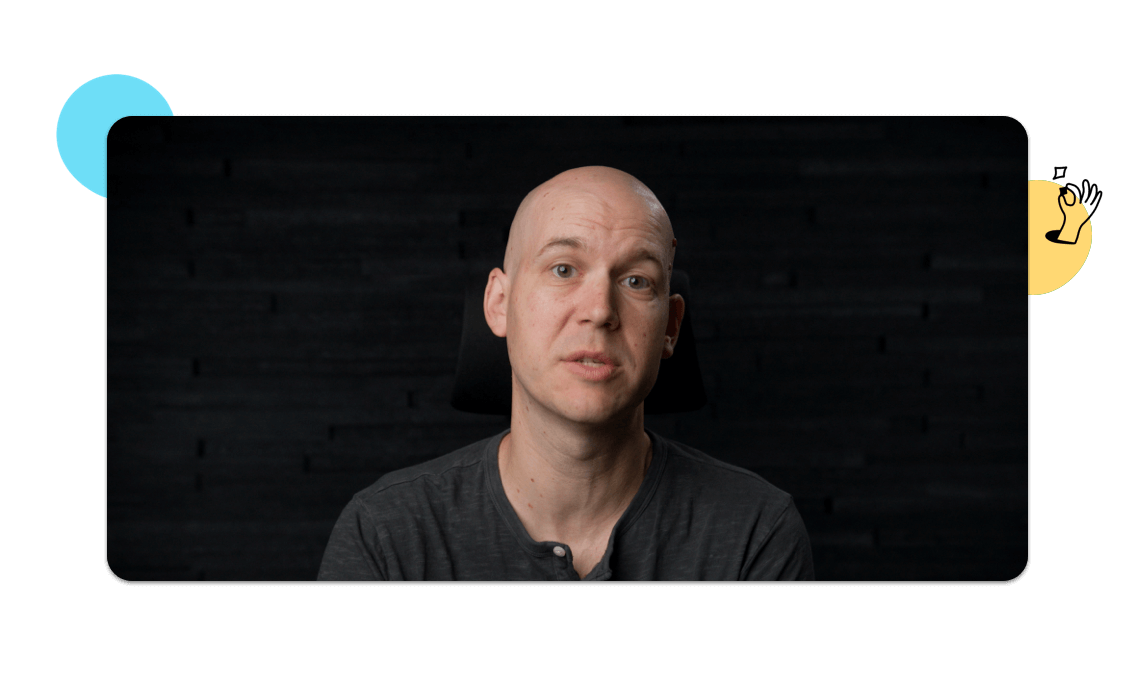
Caleb's Upcoming Events
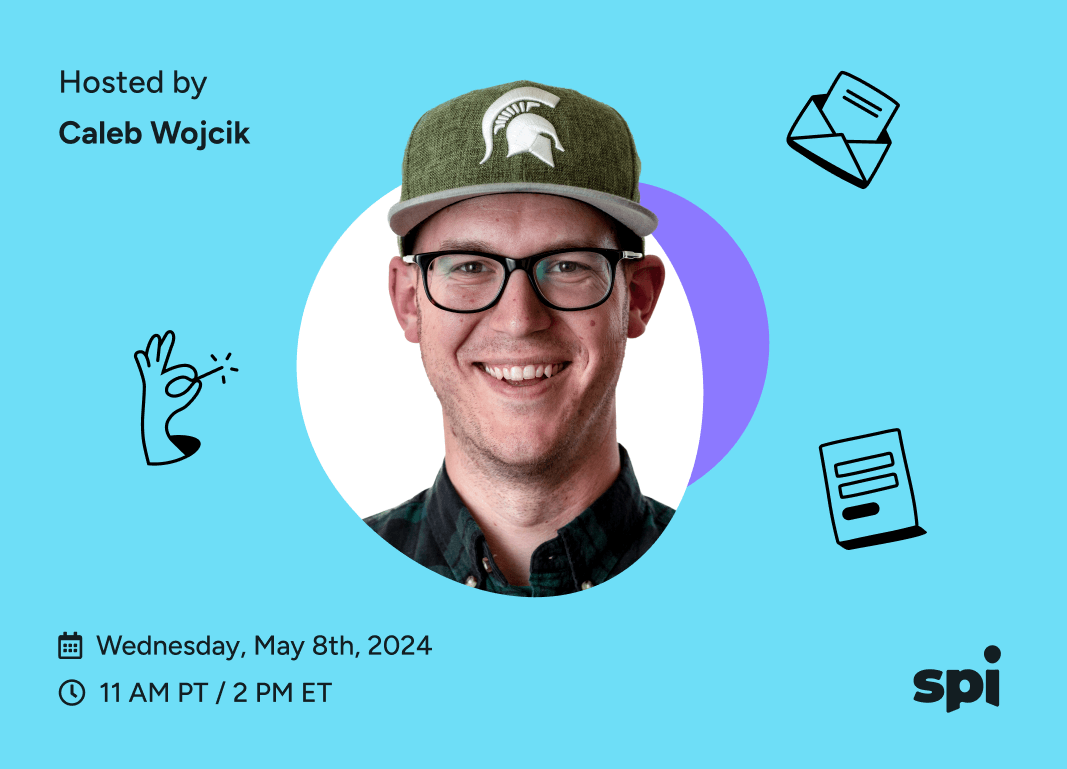

May 8th, 2024
|

11 AM PT / 2 PM ET
May All-Access Pass Workshop
How to Quickly Make YouTube Videos that will Get You More Views & Subscribers
Do you have a YouTube channel but want to up your game? Join this masterclass led by SPI Pro EIR, Caleb Wojcik, on how to quickly make your videos and gain even more views and subscribers. We’ll dive deeply into how to get more people to watch your videos and subscribe. Caleb will also cover how to streamline the actual creation of your videos, titles, and thumbnails to work smarter, not harder.
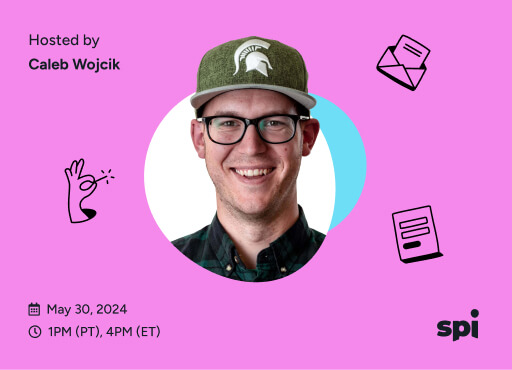

May 30th, 2024
|

1 PM PT / 4 PM ET
May SPI Pro Workshop
How to Convert YouTube Subscribers to Customers
Converting subscribers and views into paying clients or customers is vital for growing your business and boosting revenue. It’s a delicate process — that’s why we’ve brought in the best person for the job.
In this session, Caleb will guide you through the fine line between engaging your audience and converting them into paying customers without upsetting the YouTube algorithm. Explore proven strategies to grow your business and increase your revenue by maximizing the potential of your YouTube channel.
Ten Questions with Expert in Residence Caleb Wojcik
How did you get started in entrepreneurship?
Back in 2010, I started blogging about personal finance at PocketChanged.com and starting read books & blogs by entrepreneurs like Chris Guillebeau, Tim Ferriss, and Gary Vaynerchuk. Running that blog led me to start working with Corbett Barr at Think Traffic in 2011 (which eventually became Fizzle.co). At that role I fell in love with video production and left in 2014 to start my own video production company and teach what I knew at CalebWojcik.com.
What makes you tick?
Systems. Processes. Checklists. Order. Rules. Structure. Anything that makes logical sense. 
What does an average day in your entrepreneurial life look like?
The first few hours are about our three kids. Wakeup, breakfast, school drop-offs, etc. Then I settle into determining the three most important tasks for the day across my clients, my digital projects, and my physical product business (SwitchPod). Really changes each day depending on whether I’m recording, doing a lot of editing, or completing admin tasks. I keep strict hours, so I’m always done by five and barely work nights and weekends (see: three children).
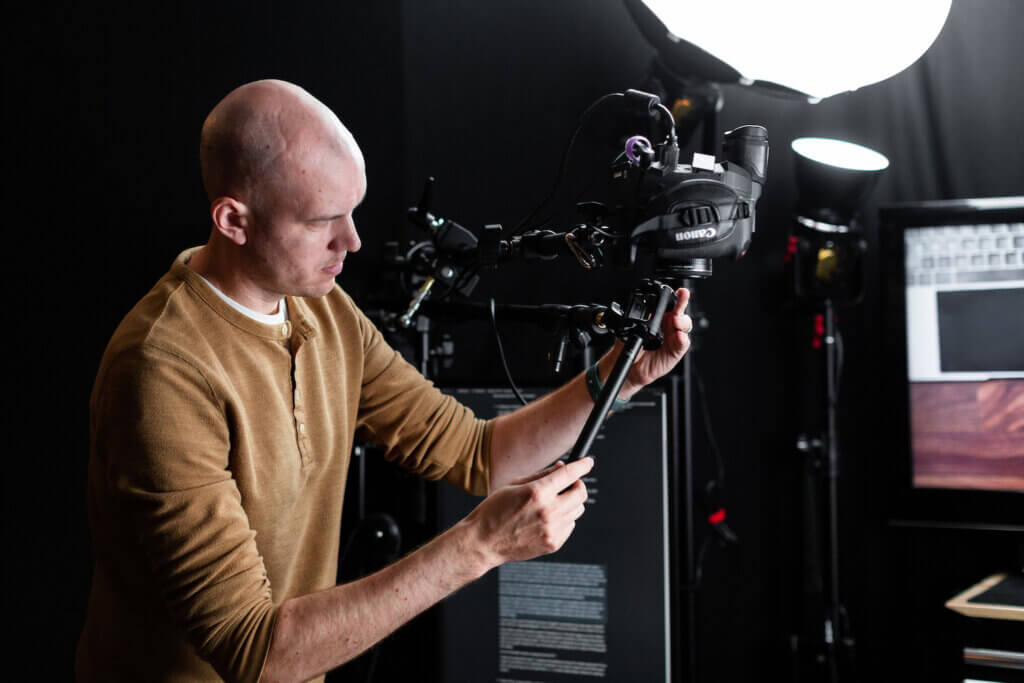
What are your areas of expertise?
My main areas of expertise are everything to do with video: Filming, editing, equipment, software, and all the places to publish videos like YouTube, social media, or online courses. Through 10+ years of running my own business, I can make a mean spreadsheet, develop a course launch, run a podcast, set up a mailing list, and more. I'm also well-versed in physical product launches (via Kickstarter) and running an ecommerce brand on Shopify or through retailers.
What are you looking forward to most in your residence with the SPI Pro community? How specifically do you want to help entrepreneurs?
Beyond helping people with what I'm an “expert” in, I want to help those who feel stuck. People who know they can accomplish more than they are now, who can see where they want to be but for whatever reason just can't see the path to make it there. This isn't easy. Otherwise, everyone that has boring jobs they hate at companies they don't like would do it. Being an entrepreneur is hard. But it is also the most rewarding way to spend your working time on the planet.
Why did you join the Entrepreneur In Residence program? What is it about Pro that makes it a special place/community for entrepreneurs?
This is a community of action-takers. I did a few accelerator group calls for a YouTube From Scratch cohort and each week I came back, people had already tried or implemented what we discussed on the previous call. I LOVE THAT. Action over research. You don't see that in every community online. A lot of people just want to pretend or play business. This community is different. It is full of action-takers.
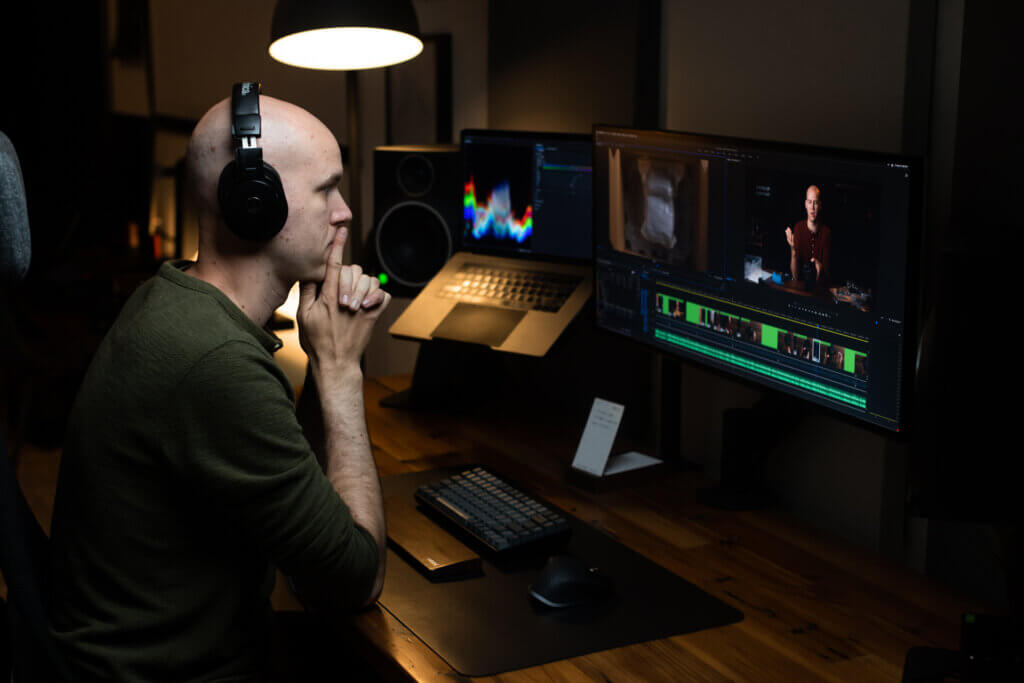
What is your biggest professional challenge to date, and how did you overcome it?
Juggling three types of businesses. Service, digital, and physical. I “overcome” it by being extremely focused on what I'm trying to do with each of them and understanding that they aren't all going to be the biggest, best businesses out there, but they all help me to have fun, meet new people, and keep my income diversified.
What is your biggest professional win to date and what did you do to make it happen?
Launching SwitchPod on Kickstarter to raise over $415,000. To make it happen I worked a lot.  But more seriously, it was such a successful launch because we took our time and launched it when the time was right. We waited until our prototype was 100 percent ready. We waited until we had the right partners on board. We waited until the Kickstarter page was ready. We had to have patience for such a big launch.
But more seriously, it was such a successful launch because we took our time and launched it when the time was right. We waited until our prototype was 100 percent ready. We waited until we had the right partners on board. We waited until the Kickstarter page was ready. We had to have patience for such a big launch.
Ready to find join your people and level up?
Like you, we're online entrepreneurs who crave connection, direction, and support from people like us.
The post Expert in Residence Caleb Wojcik appeared first on Smart Passive Income.
]]>A website is the best way to share your brand with the world — here's how to design your creator website for maximum impact.
The post How to Design Your First Branded Business Website appeared first on Smart Passive Income.
]]>If you’re of a certain age—let’s say 35 or older — you probably remember the awe and immersion you felt the first time you spun up Netscape Navigator and visited your favorite brand’s business “website.”
Now fast-forward to this age of AI, Uber, Roblox, Meta, Snapchat, and so much more… And guess what? A website is still the best way to share your brand with the world.
That’s true whether you’re a mega brand or a humble creator, solopreneur, or small business owner. Decades on, a website still provides unparalleled creative flexibility and control over your brand. It’s a place where visitors can learn more about you on your terms. A great website helps you tell your story, build trust, and even create community and fans for life.
Today we’re sharing a primer on branding and website design for online creators and entrepreneurs. We’ll walk you through how to design a website for your brand, whether you’re a creator, solopreneur, or small business owner with a team of employees.
This article won’t function as a step-by-step guide to launching a website or go into too much depth on the topic of branding itself. (For that, The SPI Beginner’s Guide to Branding can help you define your brand’s mission, vision, and more, and decide if it should be a personal brand or a company brand.)
Rather, this is a field guide to designing a website that puts your brand front and center and connects with your target audience.
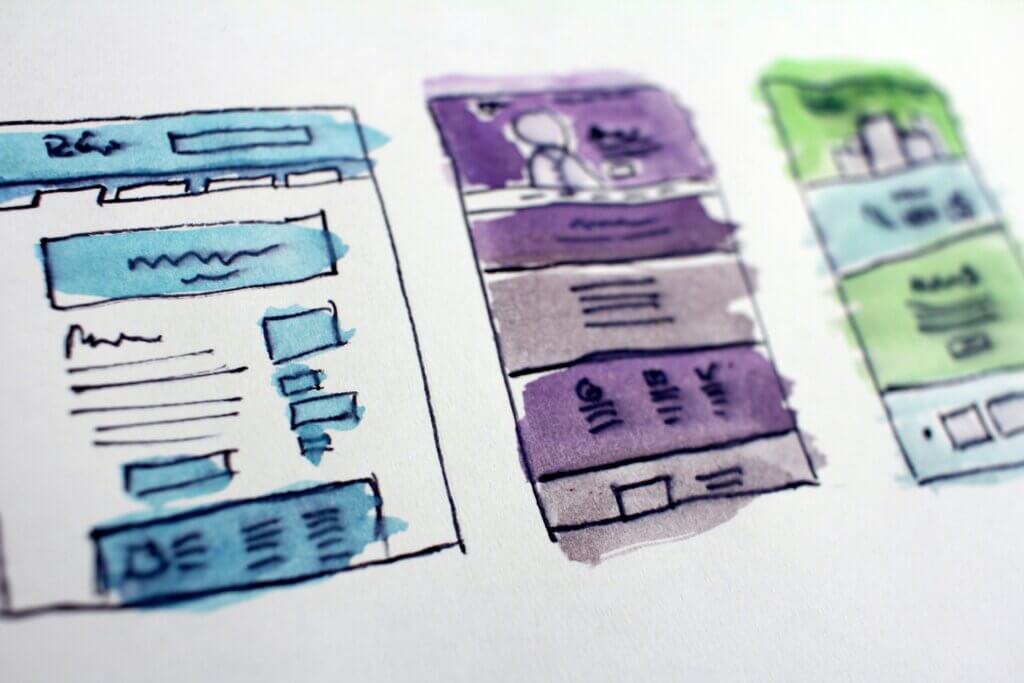
Why You Need a Branded Website
So why a branded business website? Along with your email list, a website is a must-have when you’re starting out building your brand. Like an email list, you have more creative and administrative control over a website than you do your presence on other platforms like Facebook, Instagram, or Etsy. And with the exception of rare service interruptions or security breaches, your site is much less likely to disappear the way a social media account can be banned or suspended.
Your branded website is like your home base, a focal place for shaping your brand image and narrative. At SPI, we recently revamped our website to focus on our core focus of community building and make it cleaner and easier to navigate.
Here’s what a well-crafted small business website can help you do:
- Control your brand: A website gives you full control over how you show your brand to the world, without the creative restrictions of third-party platforms. It also diversifies your online presence, reducing dependence on any single platform.
- Build trust: A well-designed website lends an air of professionalism and legitimacy to your brand, instilling trust.
- Own your content: You own and control the content on your website, reducing the risk that algorithm changes or platform shutdowns will hurt your content’s reach and visibility.
- Make money: You can use your website to promote and sell products and services or run ads.
- Build community: Websites offer a dedicated space for building a community and a following. You can capture newsletter and email-list sign-ups, and even link to your own membership community.
- Showcase your work: Use your website to share case studies, testimonials, and portfolios of your work with your audience.
- Understand your audience: Website analytics provide valuable data on user behavior, helping you better understand your audience and optimize your content to reach them.
Your Website Should Express Your Brand Personality
When a lot of people hear the word brand, they think logo. And true, a logo is a key part of your creator or online entrepreneur brand — but your brand is also a lot more than just a snazzy graphic. Since your website is your home base, it’s the best place to convey the essence of your brand through the following key elements:
- Clear purpose: Define your unique value and why you exist. At SPI, we’re upfront about our why — our mission, vision, and core values.
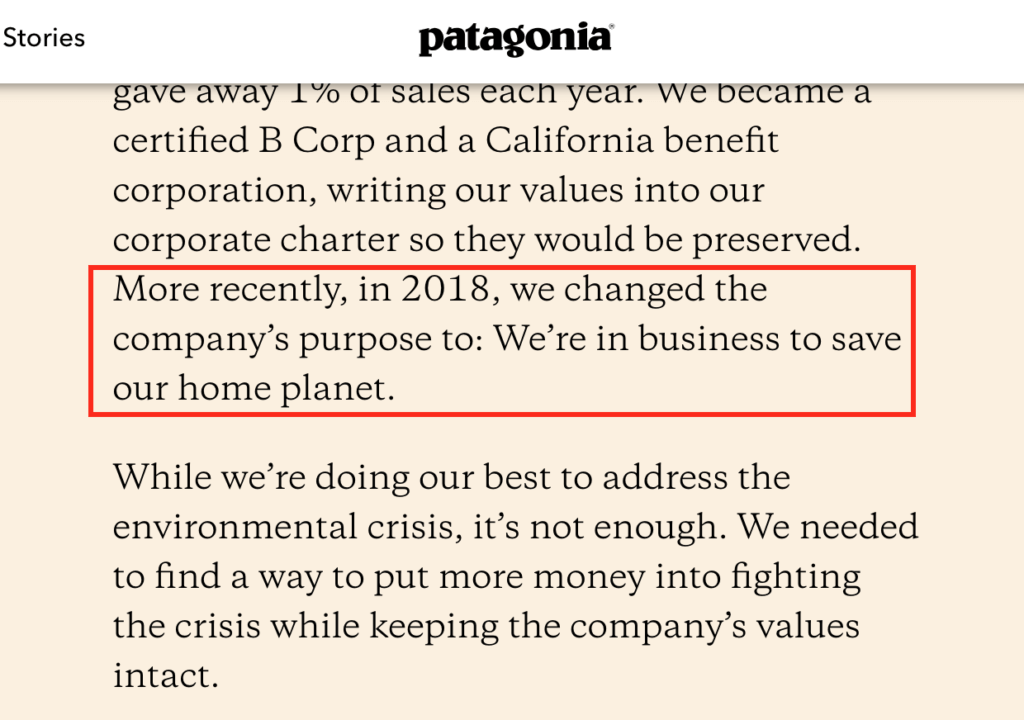
- Color scheme: Utilize a maximum of four brand-reflective colors. Align colors with professionalism; avoid mismatch. Explore color psychology—the study of how colors affect perceptions and behaviors—for guidance.
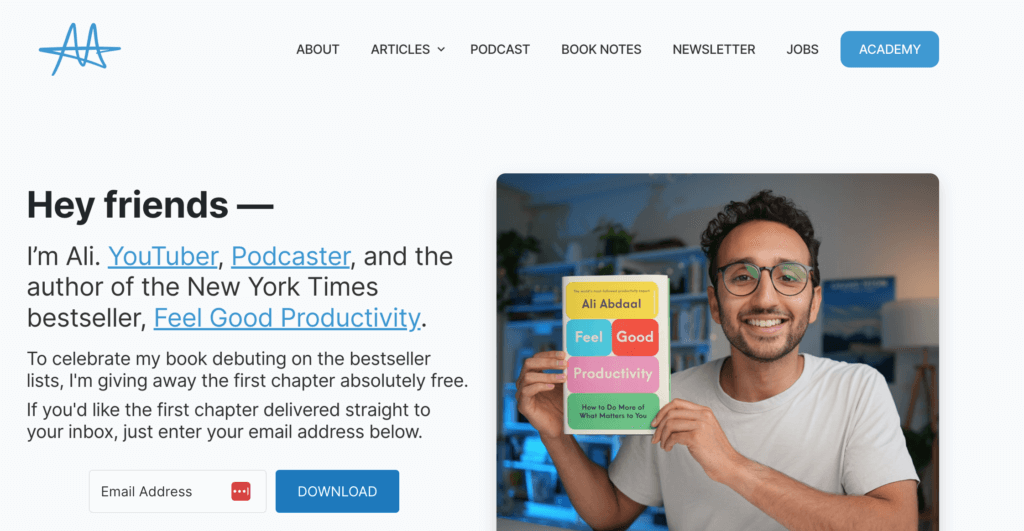
- Tone of voice: Beyond aesthetics, your branded business website needs a distinct voice — a tone that informs all your written content. Adapt your tone to your personality, niche, and audience, keeping it approachable and jargon-free.
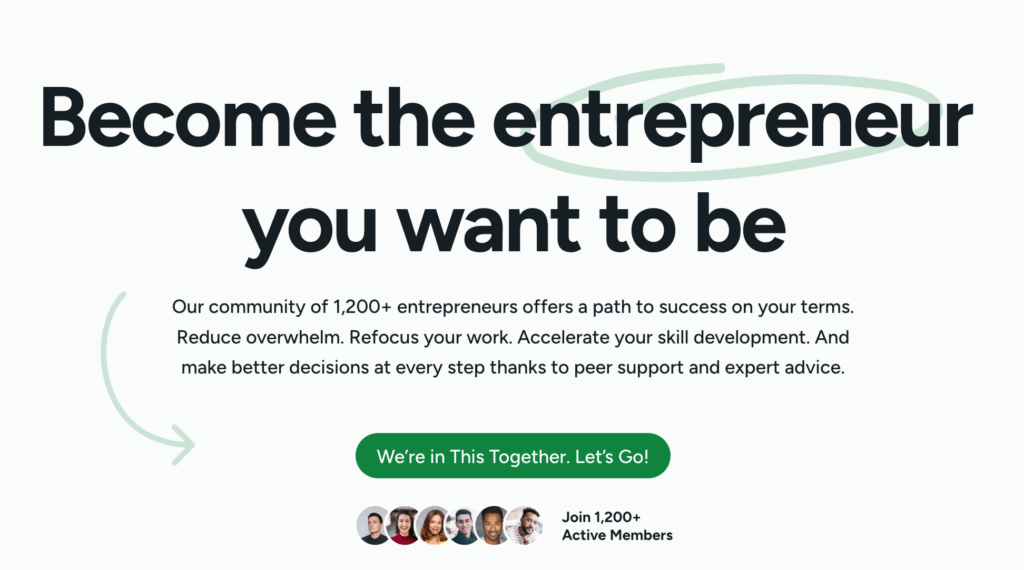
- Tagline or motto: A concise, memorable tagline helps convey your brand identity and value in bite-size form. It’s a little detail that can matter a lot!
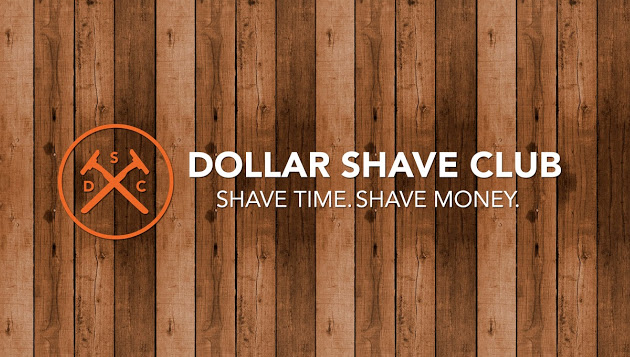
- Signature font: Choose one or two readable fonts that reflect your personality, for consistency across everything you write and to bridge your brand’s visual identity with its written one.
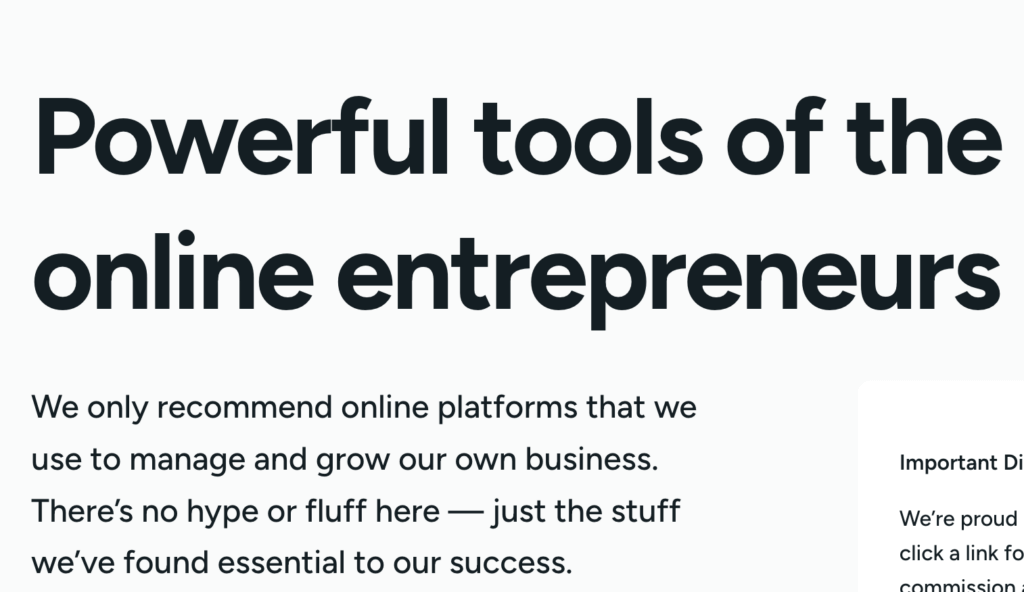
- Unforgettable logo: Last but not least, an eye-catching logo provides instant brand recognition. Consider enlisting a graphic designer for this one.

Optimizing the Visual Experience of Your Online Business Website
For the most part, visitors will experience your website visually, so there are a few more important considerations when it comes to your site’s visual assets. Make sure the images, background designs, and other visuals you use on your site are:
- Relevant to your brand and content: This may seem obvious, but your website visuals should make sense in the context of your brand and the surrounding content. Each visual asset should complement and enhance the content it accompanies and align with your brand's identity, reflecting its values, personality, and messaging.
- Strategically placed: Place visuals purposefully to guide the user's journey and emphasize key messages. Consider the flow of the website and how visuals can enhance storytelling.
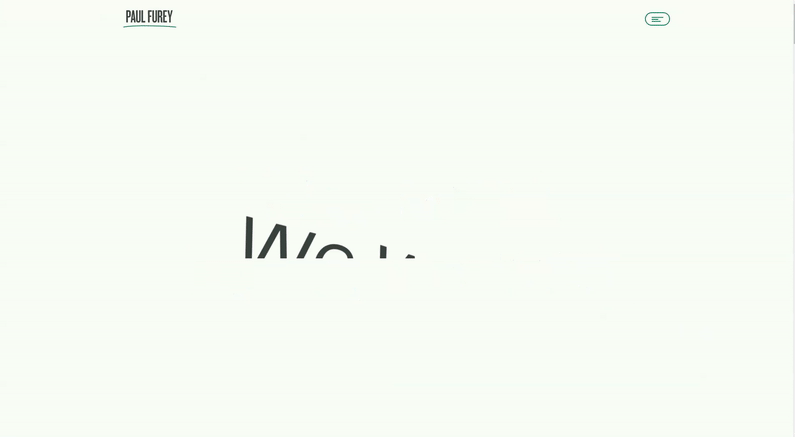
- Consistent in style: Maintaining a consistent visual style across all images creates a cohesive and harmonious look and helps with brand recognition. Use those brand colors!
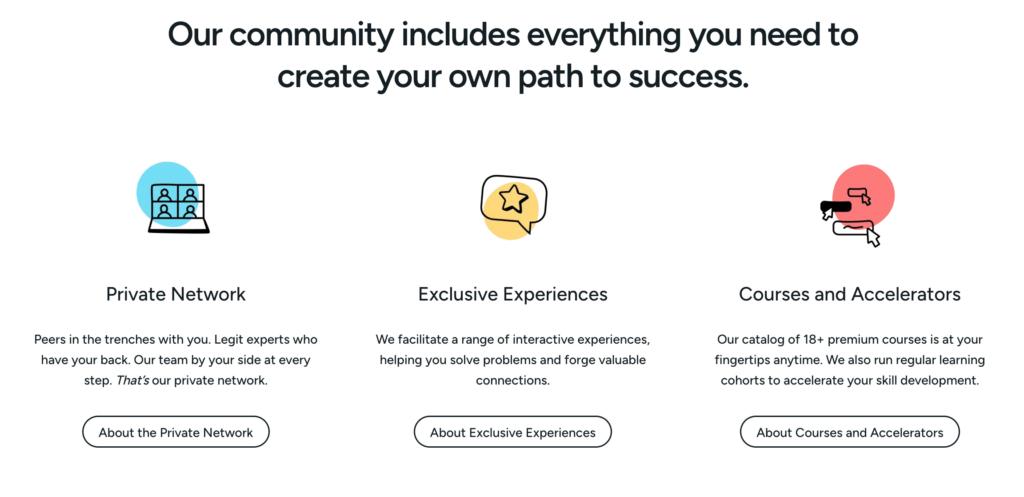
- High quality: Use high-resolution, professional images; grainy or pixelated ones can detract from your brand's credibility.
- Accessible: Not all of your visitors will be experiencing your branded business website visually, so ensure that any visual assets are accessible by adding descriptive alt text to all of your images.
- Optimized and responsive: Visual assets should adapt well to various screen sizes, particularly on mobile devices. They should also be compressed to improve loading times (and search engine rankings).
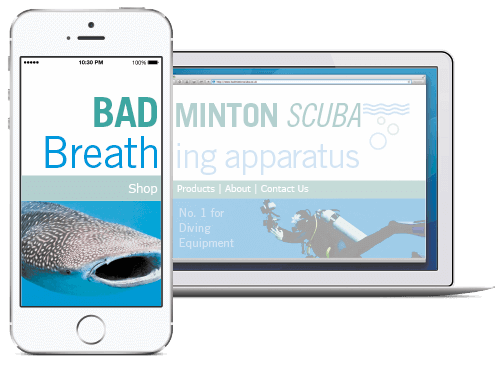
- Legal: All images should be either original, properly licensed, or fall under fair use. Respect copyright laws, and get permission if you need to!
- Timeless: As much as possible, choose visuals that can evolve with your brand rather than trends that might become outdated.
- Human: Human faces and expressions can create a stronger emotional connection with the audience, so incorporate images that feature people.
![Screenshot from the SPI community: "Ready to find [crossed out] join your people and level up?" Smiling faces decorate the page.](https://www.smartpassiveincome.com/wp-content/uploads/2024/03/humans-1024x509.png)
By making sure the visual and written experience of your website is consistent, professional, and aligned with your brand identity and voice, you’ll foster a sense of familiarity and trust with your audience.
A Great Creator Website Needs a Great User Experience: Layout and Navigation
Your website isn’t just a static display; it's an interactive experience for your audience. Once you’ve established the key brand elements your website needs, from your brand’s purpose to its voice, tone, and visual identity, it’s time to start designing the actual site layout.
As you’re choosing a layout, think about what will best convey your brand identity and message while making things as seamless and intuitive as possible for your visitors to navigate and find what they're looking for. Here are some popular layout options to consider:
- Single-Column: Clean and straightforward, with a single column for easy navigation.
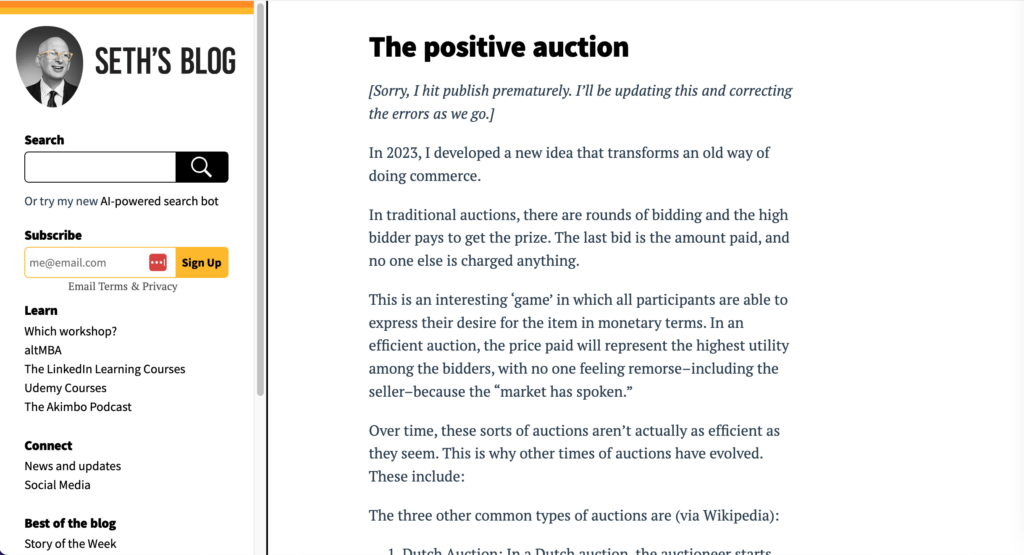
- Grid: Organizes content into a visually appealing grid structure, suitable for showcasing multiple items efficiently, like portfolios or product displays.
- Magazine or Blog Layout: Mimics a magazine or blog with multiple columns — well-suited for content-heavy websites.
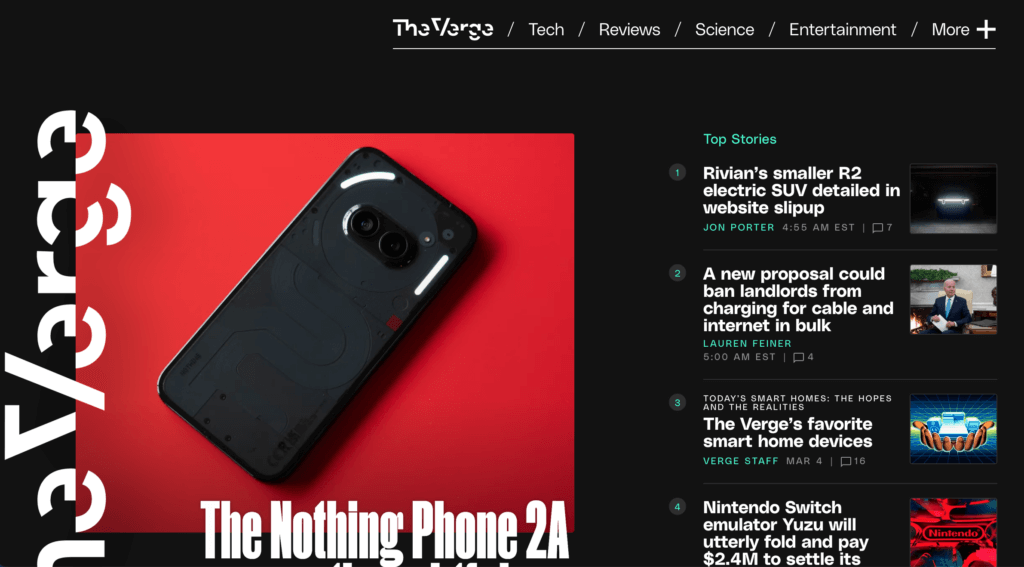
- Hero Image or Video: Features a striking image or video at the top, capturing immediate attention and often used for product showcases or setting the brand tone.
- Split Screen: Divides the webpage into two distinct sections, providing a modern and visually appealing design with room for creative elements.
- Parallax Scrolling: Creates a dynamic scrolling experience with background elements moving at different speeds, adding depth and interactivity.
- Card: Presents content in modular and flexible cards, promoting visual hierarchy and easy organization, suitable for various types of information.
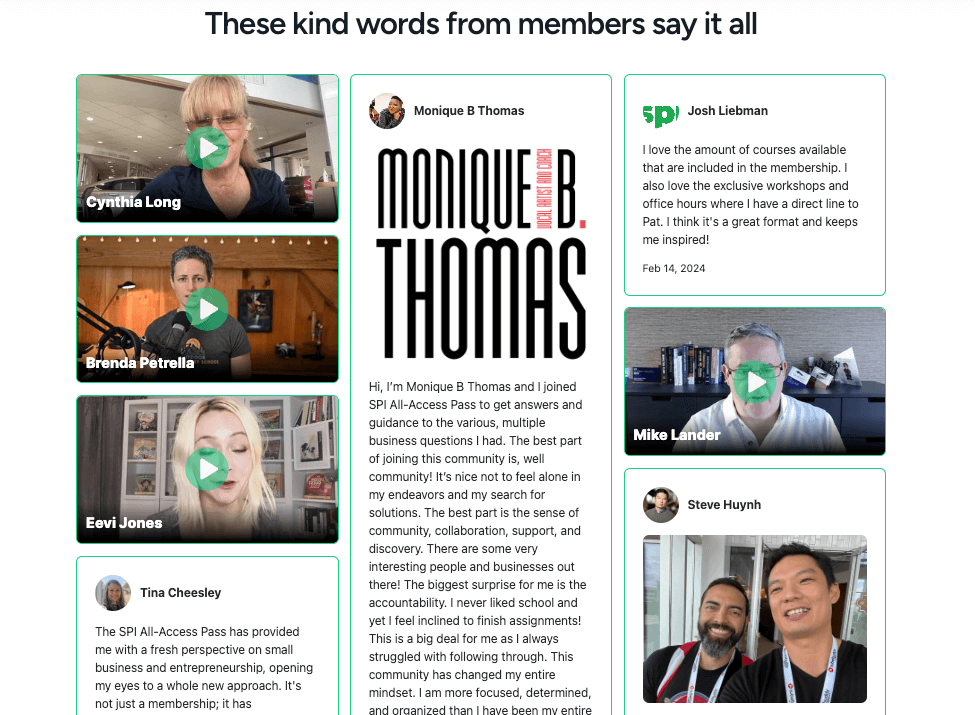
- Full-Screen Background: Incorporates a full-screen image or video background for a visually immersive experience.
A quick note on navigation: Whatever layout you choose, your users’ ease in navigating your site will determine how long they stick around and whether they’ll find what they need—or if they’ll get frustrated and give up. You can also help people navigate your branded website through careful placement and organization of menus and footers.
The Strategic Content Your Website Needs
You’ve figured out your brand’s visual identity and voice and chosen a layout for the site. Now you need to fill it with useful content that tells your visitors who you are, what you do, and how you can help them!
These are some of the key pages to consider for your branded business website—some are must-haves, while others will depend on your business and offerings:
- Home Page: The home page should offer a snapshot of your brand, enticing visitors to explore further, communicating your unique value proposition, and guiding users to key sections of your website.
- Blog: Beyond promoting your products or services, blogs are still a popular way to share valuable content that positions you as an authority in your niche.
- Podcast Page: If you have a podcast, you should definitely have a dedicated page for it on your site. Although your podcast can technically exist without a website, a podcast page can promote your show and help listeners learn more about your brand and offerings.
- Credibility Section: Testimonials, case studies, and press coverage showcase the positive experiences of others, establishing your brand's credibility and reliability and building trust. This content can live on its own page or be placed strategically at different places on your site.
- Product/Service Pages: Each product or service page should provide detailed information, benefits, and a compelling call to action (CTA).
- Brand Story/About Page: Your audience connects with the people and the story behind your online business. Use this page to communicate your mission, values, and the journey that led to the creation of your brand.
- Shop Page: If you want to use your site to sell things, you’ll need a shop page with easy navigation, clear product categorization, and a streamlined checkout process.
Examples of Online Creator and Entrepreneur Branded Websites
For a little inspiration, here’s a selection of great branded business websites created by online creators and entrepreneurs just like you! These folks all happen to be members of our SPI Pro community, which you can learn more about at SmartPassiveIncome.com/community.
Gnome Angel
Ange Wilson’s quilting-based creator business website has a strong, vibrant visual identity based around a palette of pinks and blues and a playful header font. The Gnome Angel value proposition greets you as soon as you open the home page, and as you scroll you learn about Gnome Angel’s resources and products via a “patchwork” design style that evokes a quilt. The “sticky” navigation menu persists as you descend the home page, providing easy access to the rest of the site.
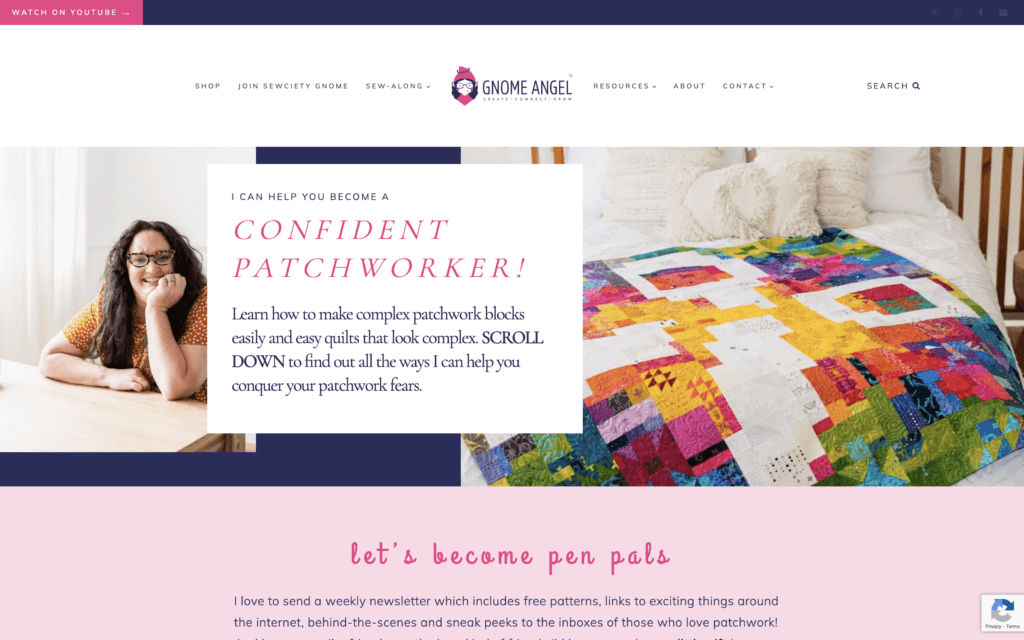
Piscari
The Piscari site is a company brand website with a simple, clean, functional home page that serves as an About page for the company and its founder, Mike Lander, with a link to join the Piscari email list at the bottom. A top nav menu that displays on every page makes it easy to learn more about the company, its services, and other resources. The “Contact Us” button, framed in bold green, highlights the main call to action visitors are encouraged to take.
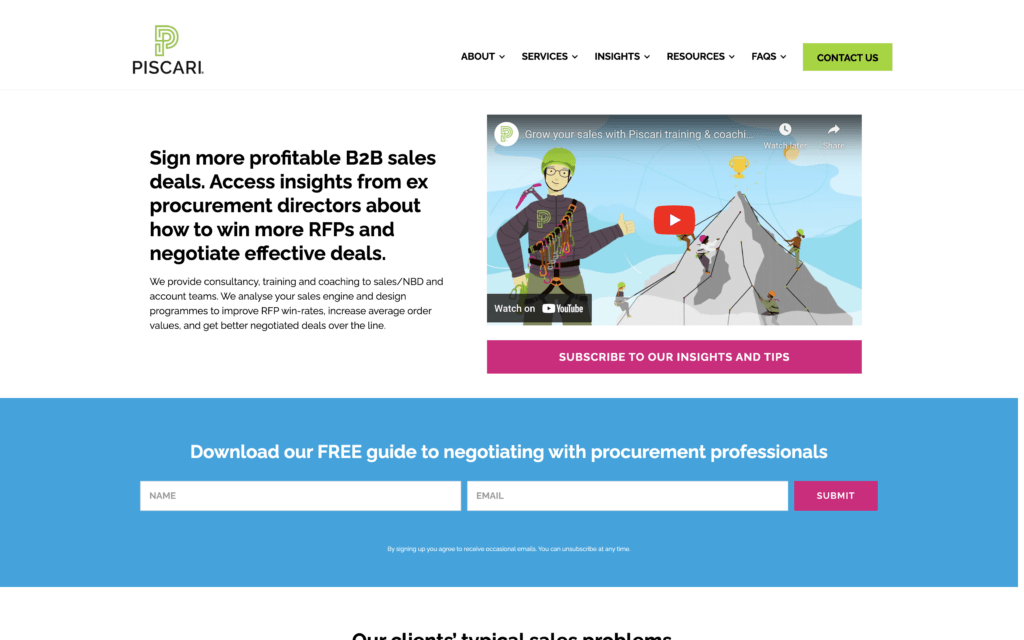
Jette Stubbs
Career and business coach Jette Stubbs’ site introduces her offerings right off the bat, followed by a friendly photo of Jette that humanizes the brand. The simple single-column layout reduces distraction and guides you down the page as you encounter a happy client’s testimonial and learn more about Jette’s services. Graphic elements and images are interspersed throughout, along with subtle font color changes to spark attention. The parallax scroll effect with Jette’s face in the background adds more human dimension and a bit of novelty. A simple top navigation menu is duplicated at the bottom, with links to an About page, Jette’s podcast, and testimonials.
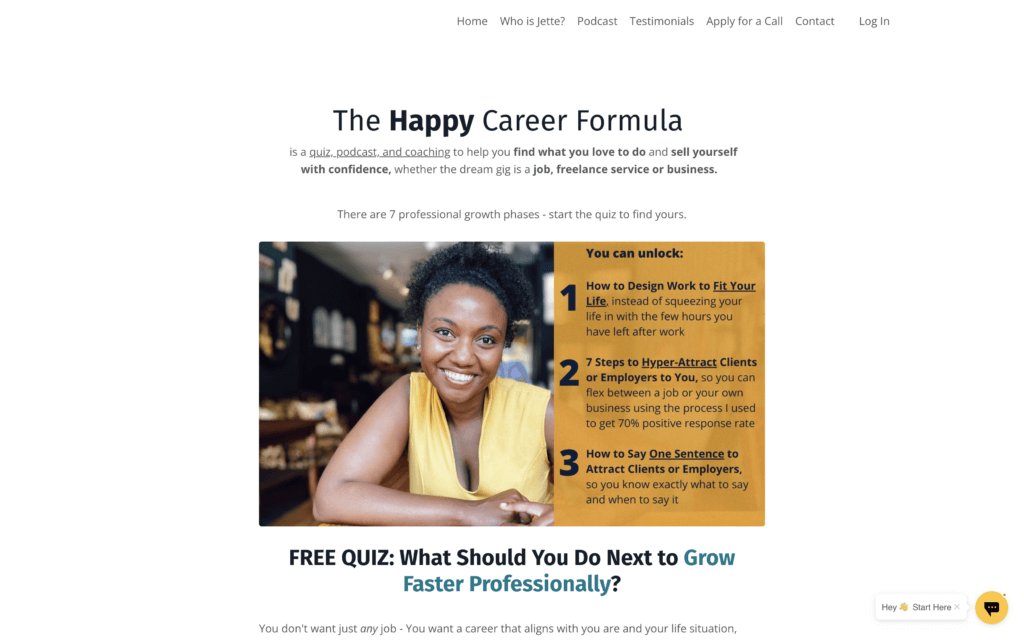
Still on the Fence about Building a Website for Your Small Business?
We’ll end with a few reminders — and by debunking a few common misconceptions about creating a branded business website:
- Yes, you do need a website. Websites aren’t just for big companies, and social media isn’t enough.
- Your website doesn’t have to be complex or aesthetically stunning. Simple, user-friendly designs often perform better, so focus on clarity and functionality above all.
- A website needs attention. Your website isn’t just going to attract traffic on its own. You need to promote it and regularly populate it with fresh, SEO-rich content.
- You don’t have to go it alone. There are plenty of great designers out there who can help you craft a logo and build a professional-looking branded website. (We worked with the good people at Rockbase for our redesign.)
If you’re feeling daunted, don’t! We’ve got all the support you need to start building your brand and designing a killer website to show it off to the world. Check out our site’s Free Resources tab, where you’ll find content for entrepreneurs at any level. If you’re ready to take the next big step in your online business journey, head to SmartPassiveIncome.com/community to learn about our communities for online entrepreneurs. You can learn from others like you who have built their own branded websites, gain access to our full library of courses, participate in live events, and more.
The post How to Design Your First Branded Business Website appeared first on Smart Passive Income.
]]>Katy Widrick invested in the All-Access Pass to shift everything about her podcast and find alignment and purpose.
The post Building Wings on the Way Down: An All-Access Pass Success Story appeared first on Smart Passive Income.
]]>
For many entrepreneurs, the first step towards working for yourself full-time comes from necessity — more than just a light shove from the universe. And often — as in Katy’s case — the end results are more than worth the initial uncertainty and challenge.
Katy Widrick serves high-growth founders as a funnel fixer, recovering the biggest expenses in their businesses — lost sales — by using simple, effective systems to increase conversions and decrease top-of-funnel costs.
An EMMY-nominated journalist and multimedia producer, Katy has worked in marketing and revenue expansion for more than 20 years, strategizing and implementing profit-first funnels that help visionary leaders maximize their impact, grow their top-line revenue, and scale their product and service lines to seven, eight, and nine figures.
Katy joined SPI’s All-Access Pass in March of 2023, and it was a turning point in her career.
“Pushed Off a Cliff”
Here’s how Katy describes her entrepreneurial leap:
“In November 2021, I suddenly and unexpectedly ended my corporate career. I’d been working at an extremely fast-growing company for three years, as a member of the executive team. While it was an experience that taught me so much about growth marketing, profitability, external and internal marketing, leadership, and more, it also left me severely burned out and, if I’m honest, fairly uncertain about my next steps.
I took a sabbatical from the job and only a few weeks into the break, was notified that my position was being eliminated… so now instead of taking a leap, it felt as though I was being pushed off a cliff.”
It turns out, though, that the push was exactly what Katy needed to “build wings on the way down,” as she put it.
Between November 2021 and March 2023, Katy re-entered the workforce but this time as her own boss. She had previously founded a company called Make Media Over, where she offered online business management, email marketing, and sales funnel designs.
When Katy closed Make Media Over to pursue her corporate career, she thought it would be for good.
“I never imagined that I would go back to entrepreneurship. I truly dismantled the business — I shuttered the website, let all of my software subscriptions lapse, notified all of my clients that I was unavailable, and went all-in on the traditional corporate experience,” Katy tells SPI.
But when her corporate career didn’t pan out, Katy turned to the one asset she’d held onto for all those years: her LLC. It was still active, and Katy decided to go back to self-employment with some big, bold goals.
Ready to find join your people and level up?
Like you, we're online entrepreneurs who crave connection, direction, and support from people like us.
A Bold Pivot: Enter the All-Acess Pass
After 14 months, Katy made another bold choice. To empower herself with even more education and skill-building — and to take her business to the next level — she decided to invest in SPI’s All-Access Pass.
“I initially joined so that I could take advantage of the Podcasting Pathway. I’d started my own podcast during those 14 months, and it was fun… but I knew it wasn’t quite what I wanted to bring to my audience. There’s nobody I trust more as a teacher than Pat Flynn, and for that pathway alone, I knew the investment would be worth it.”
Katy had been podcasting and blogging under the brand “Rising Tide Talents,” a nod to her mantra that a rising tide lifts all boats. Her podcast episodes were solo-hosted and focused on marketing funnels and leadership.
A good start, but it wasn’t nearly the show she knew it could be. All-Access Pass gave her the clarity and the confidence to pivot her podcast and take advantage of all of the other materials in AAP.

“I decided to significantly shift everything — from the format of the show to the platform I hosted it on. Once I mapped it out using All-Access Pass’ guides, I immediately felt a sense of alignment and purpose. The first time I interviewed a founder on Hard Costs, I felt magic in the air. Since then, it’s been one improvement after another: I optimized the podcast for advertising, used the email marketing course to amplify my listenership, and much more.”
Part Mastermind, Part MBA, Part Accountability Group
Katy has been very successful at helping visionaries through their own blind spots, even as she continues to lean on the support of the All-Access Pass for help with her own.
“What’s that saying? A cobbler’s kid has no shoes? That’s absolutely been my experience: what I’m very good at doing for others, I’m quite terrible at doing for myself! Joining All-Acess Pass and being part of the community has been part mastermind, part MBA, and part accountability group — and I’m so thankful for my membership.”
Lightning Round
Biggest takeaway or aha moment from All-Access Pass
The Hook/Story/Ending plans for videos that Pat teaches — they work for so many other things, too!
Favorite course in All-Access Pass
Tie with Power-Up Podcasting® and YouTube From Scratch.
Unexpected benefit of All-Access Pass
The member referral program!
The post Building Wings on the Way Down: An All-Access Pass Success Story appeared first on Smart Passive Income.
]]>What happens when you stop competing and start collaborating with other creators? And how do we apply this concept to email and newsletters? In this episode, ConvertKit Founder Nathan Barry joins me for a chat about the game-changing Creator Network. This is the number one platform I'm using to grow my Unstuck newsletter, and the […]
The post SPI 757: The Creator Network Literally Grows Your Email List appeared first on Smart Passive Income.
]]>What happens when you stop competing and start collaborating with other creators? And how do we apply this concept to email and newsletters?
In this episode, ConvertKit Founder Nathan Barry joins me for a chat about the game-changing Creator Network. This is the number one platform I'm using to grow my Unstuck newsletter, and the results are incredible! [Full Disclosure: I'm a compensated advisor and an affiliate for ConvertKit.]
Listen in because Nathan and I discuss everything from building an email list from scratch to monetizing your reach by supporting creators you love. These are the best tactics to bypass social media algorithms and leverage the Creator Network to the max!
I'm excited because I've been an advisor and affiliate for ConvertKit for almost a decade, and this is the most innovative thing I've seen happen in the email space. So tune in and enjoy!
For more, check out my conversation with Nathan in episode 689.
Today's Guest
Nathan Barry
In previous careers, Nathan has been a designer, author, and blogger. After learning the power of email marketing he gave up a successful blogging career to build ConvertKit. Outside of work, Nathan spends his time playing soccer, woodworking, and chasing after his three boys.
- Find out more about ConvertKit [affiliate link]
You'll Learn
- Why the Creator Network is the best tool for email list growth
- How collaboration is shaping the future of newsletters
- Innovating and staying on top as a mature business
- Email-based tools for business and audience growth
- Earning money and supporting creators with recommendations
- Collaborating versus competing with other creators
Resources
- Subscribe to Unstuck — my weekly newsletter on what's working in business right now, delivered free, straight to your inbox
- Connect with Pat on Twitter and Instagram
SPI 757: The Creator Network Literally Grows Your Email List
Nathan Barry: We know that our content lives adjacent to other creators. But just the truth of the matter is that quality matters more than anything. Before you could probably get away with writing a mediocre newsletter and still get 5,000 subscribers and an acceptable open rate and on from there.
Back in the day, you could put out some mediocre YouTube videos and probably still get traction. Try to do that today, and it's not going to work. You put a ton of effort into it because you know that the content all around it is so high quality, and you're competing for that attention, but the pie is so, so big.
Pat Flynn: In 2014, I was invited to coffee by a friend of mine, Nathan Barry. And I had known Nathan as somebody who was a designer, a very prolific content creator. But what he brought to the table, literally the coffee table at a coffee shop in San Diego, was a proposal. A proposal for me to work with him on a new company that he had just started.
A company that was at the time making around $10,000 a month as a software, an email service provider. called ConvertKit. And he wanted me to come on to be a, an advisor and, and really a partner to the company. And what we talked about that day at that coffee shop was not really about money or earnings or anything like that, but a vision of the future that would be a win for both of us.
A conversation about how we could help each other along the way. That company, ConvertKit, at the time was making $10,000 MRR, or Monthly Recurring Revenue, $10,000 a month. Today, that company is generating more than $1,000,000 a day. Yes, they just recently, at the end of 2023, surpassed the $365,000,000 a year mark, which is amazing.
And I wanted to bring Nathan back on to talk about some of what they're up to to help us creators, specifically something that they recently launched last year in 2023 called the Creator Network. And I'm going to tell you that just up front here, it is the number one thing that is helping to grow our email list at SPI right now.
It's the Creator Network. And whether you are a ConvertKit user or not, you will get some value out of this because it shares some principles behind where we believe email to be headed to be a little bit more collaborative and a little bit more social. And what ConvertKit has built and why they built it and the advantages that they have with it is incredible.
So, as I mentioned before, we're going to be interviewing and getting an update from Nathan Berry, CEO and founder of ConvertKit, a company that I am an affiliate for and have been an advisor for, for about a decade. So I just wanted to share all that up front, but this is going to be a great one because there's a lot of lessons to be learned, especially if you're building something big.
You might be at the start of your startup journey, so whether you are a startup founder, a startup creator, or just a creator in general, it's this will be helpful for you and I look forward to seeing what you think. So here he is, Nathan Berry. Welcome to session 757 of the Smart Passive Income Podcast.
Here we go.
Announcer: You're listening to the Smart Passive Income Podcast, a proud member of the Entrepreneur Podcast Network, a show that's all about working hard now, so you can sit back and reap the benefits later. And now your host, he has a junk email account with over 100,000 unread emails. Pat Flynn.
Pat Flynn: Nathan, welcome back to the SPI podcast, man.
Nathan Barry: It is good to be here. It's good to see you, Pat.
Pat Flynn: You were here when you had first made the decision to sort of drop a lot of what you were working on in the design space and designing apps and such to go full time with ConvertKit. And here we are, I think exactly 10 years later, or at least close to that.
Pretty close, yeah. It's been a wild ride. How would you describe the ride with ConvertKit in one sentence?
Nathan Barry: One sentence. All right. Long but rewarding.
Pat Flynn: Long but rewarding. What were some of the bigger challenges that you had along the way that you can remember reflecting on the last 10 years with ConvertKit?
Nathan Barry: First, like the cold start problem of getting a, any product, but especially a software company off the ground and getting those first hundred customers or so.
And then really the first big partners. When you came over to ConvertKit, I think we were $10,000 a month in revenue. And then like, that was a huge inflection point. So basically like that cold start of getting going than the first partners is sort of two, two problems. I think in the six months after you switched to ConvertKit and then later started talking about it, we grew from $10,000 a month to a $100,000 a month.
Pat Flynn: So it was, that's pretty good. I'd like to maybe take a little bit of credit for that.
Nathan Barry: Oh, you a hundred percent should. I remember this is back in the day. Some people were going to be like, what are even these platforms? You did a live stream. I want to say it was on Meerkat. Could have been Periscope. Yeah, one of the two.
And you're like, here's what I'm doing in my email setup. And people are like, Oh, what's that? What email tool is that? And you're like, I can't tell you yet. This is like at 10 p. m. some night and a bunch of people figured out what the interface was. Someone in the comments was like, I think that's ConvertKit, you know, but you like deliberately like tease it and then not.
And then I want to say like a day or two later you did it again, but you actually said like, okay, all right, I'm using ConvertKit. Here's how it's going, you know, and you did such a good job of positioning us as like, basically of the hot new thing, which we were, but you know, it takes some good marketing to really emphasize that.
And I just remember and really that driving the next problem, which is once you have that crazy growth, how do you scale it? And how do you support that scale? Because we did, it was $10,000 a month in revenue when you became a customer and a little bit more when you became a partner and joined the board.
And then a year later. It was like $250,000 a month and 18 months from that date, it was $500,000 a month. So in 18 months, we went from 10k to 500k a month. And that was really like, I guess the third problem. If it's like cold start, how do you get partners? And then how do you scale? And support those partners, and the customers going crazy.
Those were three of the biggest challenges in there.
Pat Flynn: You know, we see a lot of startups come and have also seen a lot of startups go. I feel like a lot of startups that remain or at least stay a little bit more consistent before, and as they are growing, is related to the partners that they connect with I'd be curious to ask you now reflecting back and also for everybody else starting something, how do you go and make sure you find the right partners?
And and how do you and I can share my answer on the opposite end of yours, how do you encourage a partner to in fact get behind something and promote it and promote it authentically and still support that person and make it a win for everybody involved.
Nathan Barry: I think what makes a big difference is going beyond like the transaction and making it much more of a relationship.
And so, even for us, like, where we started, like, we met at Blog World, New Media Expo, I think people are going to be like, what even are these things? You're talking about platforms that haven't existed in decades. You're talking about conferences that haven't existed in a long time.
Pat Flynn: We're going back in time.
Yeah.
Nathan Barry: But really those in person connections and then going from there into like building those relationships. Like I still remember like us meeting the coffee shop in San Diego, like that kind of thing just goes so far. People are like, Oh, that's what worked to close the deal. It's like, no, no, that's what worked to start a friendship.
So I think that's the thing that we really emphasize and just think about it long term. Like too many people are saying like, Oh, if I could get this partner to do this one webinar, what would happen? And you and I both approached things from the beginning of like, okay, what would this look like to work together for, you know, I think we were thinking like a five year time horizon then, you know, but even now it's been a lot longer than that. And if you approach it from the beginning that way and you find partners who will approach it from the beginning that way and you invest in the relationship, then I think it makes a huge difference.
What would you say?
Pat Flynn: Yeah. I mean, there were a lot of reasons why I wanted to work with you and a lot of it was because you had come at it from a relationship first position and how you could potentially even shape ConvertKit to help a creator like me. You always made it about me, which is really interesting.
And as a result of doing that, I wanted to make sure that I did what I could on my part to return the favor. And to do that, it was very easy because ConvertKit was the hot new thing. It was something that was very useful to the audience at the time that they hadn't seen before. And so I had a lot of creative license to figure out ways to introduce those things and the new concept and the software to people and kind of blow their mind.
Right. I told a lot of people back then when they were like, how are you doing so well being an affiliate for ConvertKit? How did this even happen? I said, well, it's really easy to do when the product is really great. I'd also like to maybe raise my hand for a little bit of credit in terms of helping to shape the product itself through conversations that you and I had.
Nathan Barry: Well, give an example of that. Like we have this feature that's one of my favorites in ConvertKit, which is content snippets. Let's say I write the same email signature. Or I have a call to action for my book or my course, you know, you find yourself rewriting this in, in email sequences or in broadcasts or that sort of thing.
And you were the one that was like, Hey, there should be a library of content snippets that I can then write, I can have my calls to action, my social media links, you know, anything else. And then I should be able to just call that in, for a particular broadcast, or better yet, if I have all these automations, they could all pull in one snippet and I change it one spot and it updates across all these other emails.
And so that was something I remember the board meeting that we were at where you were talking about, like, how great of a feature that would be, and we built it and it's like with our professional users, the beginners don't know or care about that, but the pros are all about that kind of functionality, and that comes from like a tight connection between, you know, a partner and the product. And there's going to be other partners who don't have a product mind like you do, you know, but when you're in there using it all the time, and then you have that, that voice to be like, Hey, if you implement this, like, I know that I'm going to love it.
My team's going to love it. And by proxy, I know that, you know. 10,000 of my closest friends, you know, on this webinar are going to love it too.
Pat Flynn: I think you positioned it really well when you had me come on the board to essentially give me permission to tell you and everybody else on the team, like where things were lacking.
When you gave me that permission, it really opened my eyes to, Oh, this is what this relationship can be like. It's not just me promoting this product. Like I had many other products. I was a affiliate for a very well known web hosting company, keyword research tools, all these kinds of things. But in, in, in none of those relationships were, was anybody really asking me like, well, where can we improve?
And that's really where you started. And I absolutely love that. So some great lessons for those who are sort of in startup mode and working with partners. It's something that can be a win for all sides. And, you know, as time went by, more email service providers, competitors started to finally get smart to finally introduce a lot of the same things that ConvertKit was known for you know, being innovative for.
And now it's like everybody's catching up, right? And, you know, I remember some board meetings that we've had where we've actually, that was the main topic. It was like, Hey, everybody's catching up. Like, where are we in this space now? We are no longer necessarily the front runners in terms of innovation here.
What's happening, can you go through a little bit of the. the mindset of a CEO when something like that happens, your competitors are coming up and they're coming up fast and maybe even innovating ahead of you. How does one navigate that as a CEO of a fast moving software company?
Nathan Barry: Yeah, for us in the email marketing space, it was always very competitive.
Like we'd probably list off. You know, 20 plus companies that are tens or, you know, 50 million a year in revenue or more, but we were the only ones focused on creators. And so we had like MailChimp was focused on all of small business and creators happened to be a small business. And so they're like, great, you have a home here that, that works.
But we got to ride this wave of being the only ones focused on creators. And I don't think we fully understood how good we had it when we were directly competing with MailChimp and MailChimp was kind of competing with us. And then really, what happened is the creator economy grew. Which is funny, because investors early on were like, well, when we tried to raise funding, and failed.
Which I'm very glad for now, but they were like, this creator thing will never be big. You'll never like build a big enough business, you know, now, like obviously it's worked out quite well, but what would happen is, you know, years later, we ended up with a whole bunch of companies focused specifically on the creator world.
So I think of right now, like there's really four, there's us, Substack, Beehive and Flowdesk that within all of email marketing are now just focused exclusively on creators. So that's where we found ourselves like, Oh, we have to step up our game. And so a couple of things that we did that really helped.
And I remember those, those board meetings where we talked through it. One is really focusing on the conversations and the relationships with the creators. I think it especially got hard in two ways. I think we got a level of scale as a company where we started for a little bit loose touch with creators.
And then during like that came right before COVID and then during COVID. I didn't realize how much we relied on conferences and masterminds and dinners and coffee meetups and all of that to get that voice of the creator. So when it came time when like, you know, we went more than a year without doing any of those things, then you realize like, Oh, we're starting to lose that connection and touch with creators.
And so bringing that back and then also doubling down on product velocity, like, so it's basically how good and how actionable our ideas of what to build, like how close to what graders need, and then how quickly can we build them. And I think those two changes, like we restructured our whole product engineering team around how do we ship products quickly?
Like, how do we get a meaningful thing out like every other week? And that's really been. You know, this year, so I think those are the two biggest changes that we made to, like, make sure the company stays competitive for a very long time.
Pat Flynn: How have you adjusted since COVID to stay in touch with the audience and creators, as well as filtering all those ideas that come in for the engineering team?
Nathan Barry: Because you mean not every feature request should be directly built in.
Pat Flynn: I mean, from my experience, and I know just kind of logically that would kind of kill the company, kill the, kill the team, kill everything. And so I would imagine there's some sort of matrix or scoring carters or some method to absorb and intake everything so that it's on the table, but then rank them or grade them and then make decisions on that.
So how does that work? Where does one, in ConvertKit, get to connect with user and then how does one filter through all those requests and all the feature requests.
Nathan Barry: So I think the connections with creators got a lot better once we were able to meet in person again and then just be a lot more deliberate about getting on calls with creators.
We had a team put together, like telling a whole bunch of creator stories, and we had focused on their story and not as much on feedback on how we can help them better. And so like Issa and our storytelling team really put together those other questions, like, okay, what's your product feedback? How can we help you more?
And that was good. And then on the filtering, the ideas were that when the feature request comes in, you really have to focus on. What is the creator or the customer trying to accomplish? Often they'll say, here's how to solve it. And it's easy to be like, cool, let me log that. And yep, thank you. I've got you logged in there.
But what you have to do is really dig in and say, why do you want that? I know, like, what's the problem that you're trying to solve with that solution? And almost like set the solution that they suggested aside and really dig in. And then when you find the thing that you're like, oh, you know, we keep peeling back layers.
And then like across all of these creators that we've talked to, here's a shared problem. Okay. What's a solution that can come to, to solve this broad range of them. And so it's really falling in love with the problem rather than falling in love with a particular solution. And that's what makes the difference.
Pat Flynn: Can you give me an example of a problem that was highlighted in 2023 and then how ConvertKit engineered a solution for it.
Nathan Barry: Yeah, so every like author, podcaster, blogger, writer that I talk to, they all talk about one thing. They want growth and they're figuring it like they're all sharing tips. How, how can we grow all of that?
I was actually having dinner with Jason Pfeiffer, who's the editor in chief of Entrepreneur magazine just this week, he happened to be in Boise. And I was like, Hey man, let's, let's meet up.
Pat Flynn: One of our Experts in Residence at SPI.
Nathan Barry: Yeah. I was going to say that, that he, like, he speaks very highly of SPI and the community and, and you and Matt in particular of just like the connection that you all have to creators and how you serve creators. But he was telling me, he was like, look, when I get together with my author and creator friends, we're all asking, Hey, what's working for growth right now? And so we knew. The more tools we can build for growth, the better. And what we realized is that email has pros and cons.
On one hand, email is amazing for connection. There's no algorithm in the way. I can tag you, you know, based on the fact that you bought my book. I can reach you, you know, time things just to you versus like mass marketing on Instagram, for example. But email doesn't have distribution. And so it's actually, you have to rely on another channel.
And so what we were setting out to do is how can we build distribution native to email. And when you think about all these creators sitting around saying like, Oh, I really want to grow. And you look over here and there's another creator who's like, I really want to grow, but I don't know how. And we realized like, wait a second, you both have the thing that the other person wants.
And if you go to YouTube, their biggest advice on growth is to do collaborations. You know, collaborate with other creators, and we all know this, right, from going to conferences and everything else, like we all have an inflection point in our business that came from another creator that we worked with or met or got ideas from.
And so when we were looking at what to build in, you know the middle of 2022 and talking through that, it was like, okay, how can we like build basically native collaborations into the product. And that's what turned into the ConvertKit Creator Network, which is a way that when someone signs up for my newsletter, it says, Hey, thanks so much for subscribing, why don't you also check out these other creators? Why don't you check out Pat and Sahil Bloom and Susan Cain, you know, like a few other creators that I recommend. And then vice versa, someone signs up to yours, it recommends me and a few other creators. And so now, every bit of growth that I'm pushing for, like everyone that I get from social or LinkedIn or my podcast, wherever I'm growing is now driving growth to you and vice versa.
So it's like this multiplying effect. And we launched that in, I guess, spring 2023, and it's just taken off like crazy.
Pat Flynn: Yeah, it's been very nice to see because for a while, you know, we initially talked about ConvertKit being on sort of the leading edge of innovation and helping creators and email marketing.
And a lot of the tagging things were very innovative. I mean, we used to see them in tools like Infusionsoft and whatnot, and it was just so complicated. You had to pay people to set it up for you and ConvertKit made it really easy. And then of course everybody caught up and it seemed like for a while that, you know, ConvertKit was just kind of in maintenance mode, making sure things were working smoothly. And, you know, some things were coming out here and there and you came out with you know, a checkout system and all this stuff. And, and, and that was great, but for growth specifically, which is like the number one thing you said that people want, and I know this and everybody here listening knows this, there really wasn't anything that was serving us.
We had to rely on our outside platforms to make this happen. So when I saw this happen, it was refreshing because it was like, okay. back again with something new to really dive into what's helping us grow our businesses ultimately and the results have been incredible. Even on our end, we've had hundreds of other creators recommend the Unstuck newsletter here at SPI and we've recommended dozens of different creators and we've helped them grow.
In fact, a couple people have earned an additional extra thousands of subscribers from us because we have vetted them and we recommend them. And there, there is a process of vetting and there is a process of selection and approval. It's not just like Wild West, you can't kind of go on anybody's website.
And so there is still some collaboration involved, but to have it being done natively on ConvertKit is really, really great. And it's really easy. Now, I also know that ConvertKit isn't the first. email service provider that has enabled such a thing. Can you speak to how one innovates over something that has already been done?
How does one take something that somebody else is doing, but, but then make it better? And then what are the unfair advantages that ConvertKit has over perhaps the others?
Nathan Barry: Yeah, so SparkLoop was really the first to build out a recommendation system like this, and they launched it basically right around the same time that Substack also launched recommendations.
What was interesting about SparkLoop is that they were an open network, they worked with any email provider because they're not an email provider themselves. And that was really interesting. We also had very conveniently made a big investment in Sparkloop like a year before they came up with this. And so it was like, Oh, this is great.
You know, they had their referral product and we invested in that and then did a big integration. And I knew that those guys were going to come up with something really good. And so when they did it was fantastic. And so they were the first ones to roll it out. Substack rolled it out shortly after.
And then from there, you know, I think Beehive, a while later, added some similar functionality. I think the big difference with the direction that we're going is that we're building an open network. So I come from a world of like open source software and community and collaboration. And that's why I was so interested in what SparkLoop was doing, because especially in the paid recommendation side, we've talked about the free side, right?
Of I'm recommending you and you're recommending me, but we also have this whole paid component where I can go on there as a creator and say, Hey, I will pay $2 for every engaged subscriber that another creator sends to me. And I have a budget of $5,000 a month, right? And other creators can browse that and say, Oh, I'd love to recommend Nathan's newsletter and get paid for it.
That sounds fantastic. So SparkLoop came out with that paid side very first. And then as they were scaling that one thing they did that was really, really smart is they made it so that as a sponsor or as a creator earning, you could be on any platform. And so what that meant is that like Morning Brew and The Motley Fool and these Market Beat, like these big, big newsletters who know how to monetize really well and are really high quality, they're always going to be on like a Salesforce Marketing Cloud or some of these big enterprise systems. They're never going to be on a ConvertKit or a Beehive or something else because that's not the right fit for them. And so what would happen is now the big brands can sponsor really anyone can sponsor.
And then what it results in is a much higher, like, as a creator, you get paid more for every subscriber you're referring to like a Morning Brew or something, you have a huge collection of newsletters, you can refer to, because it's not, you know, a two sided marketplace inside of a walled garden, it's actually like widely open, and the quality ends up being much higher.
And so what we found, because of those dynamics of like the open marketplace, It's turned into a virtuous cycle where because we have the best sponsors trying to grow, then we end up with the best creators who want to earn more to recommend that, which results in sponsors being willing to spend more because the quality of the subscribers they're getting is higher.
And up from there, we actually found, we have put out an annual report, which is really interesting to look at, but we found out that 95 percent cause they quoted numbers in it, 95 percent of all paid recommendations are done through SparkLoop, which I guess if I didn't mention this earlier, we bought SparkLoop at the beginning of the year.
And so it's now natively integrated and ConvertKit and every other email platform. So we're really pushing this like open network and making it as big and collaborative as possible rather than like closed ecosystem.
Pat Flynn: When you look at it from a business and strategy standpoint, it makes sense to invest into this.
I mean, if you were going to use the paid recommendations, you're getting subscribers coming in and those subscribers could go down a funnel such that you will get an ROI, which then you can put back into the paid recommendations and then you develop this flywheel. I think yourself and Sahil and several other people on your on your side have been talking a lot about the this idea of a flywheel that things begin to grow or snowball in a way that just keeps serving you in multiple different ways.
And I think it's great. I have some questions that I know have been on my audience's mind about the Creator Network, just some initial reactions to them that I'd love to get your take on if that's okay, Nathan. Yeah. The first one is if, if a person's subscribing to my email list, right, which is great, and then they get served another page that says, hey, you might also love to subscribe to these people.
Initially, a lot of people are concerned that aren't I just diluting a person's email inbox such that my emails now are going to be now competing with Ali Abdaal's and Nathan's and Kieran Drew's and you know so on and so forth. What is the best practice or how does one wrap their head around this idea of yes it's cool to help promote other people's email lists but now I'm also competing inbox.
Nathan Barry: Yeah I think competing as a creator is a really Interesting idea because we're used to it in the business world, right? Like, I don't know, Walmart and target are competing and you're like, yeah, that makes sense. As a creator, there is a limited amount of attention, but there's effectively an unlimited number of people that you can get that attention from, right?
Like neither you or I are looking at it and going, okay, I want to grow my newsletter, but it's really going to be limited by the global English speaking population that cares about business. We know that we're so tiny compared to that, that we're not worried about market saturation. And so to what extent Is someone listening to, or let's say reading your newsletter and not mine or vice versa.
So like competition is kind of this weird idea, but we know that each individual has a fixed amount of attention, right? Yeah. I'm not going to read 40 email newsletters, you know, on a week cause that's just not reasonable. And so I think it's interesting to try to balance that. I think about competition probably the same way as email now, as I think about it with competition on social platforms, like we know that on my YouTube channel, someone is scrolling a feed and they're like, Oh, I'm going to pick that one. That seems interesting. They may not engage with every piece of content or scrolling, you know, Instagram is short from video.
We know that our content lives adjacent to other creators and that's always been the case with email. It's just now there might be more creators there. So I guess two things. One, the upside is distribution for great content just got way easier because now we can get in front of so many more potential readers, the other side of it, I was going to say the downside, but I think really just the truth of the matter is that quality matters more than anything. Before you could probably get away with writing a mediocre newsletter and still get 5,000 subscribers and an acceptable open rate and on from there.
In the same way that probably back in the day, you could put out some mediocre YouTube videos and probably still get traction. Try to do that today, and it's not going to work like that. If you're, if your YouTube videos were mediocre, would they go anywhere? Like you put a ton of effort into it because you know that the content all around it is so high quality and you're competing for that attention, but the pie is so, so big. I don't know. What's your take?
Pat Flynn: Yeah. My take is bring on the competition. I mean, I'm, I'm happy to recommend people that I care about and enjoy and also love reading. I mean, to me, that is a service to my subscribers is to go to Ali Abdaal's productivity newsletter because his stuff is great.
I want you to read his stuff. His stuff is different than mine. But when it comes to where there is real competition, which is like literally the inbox and the deluge of subject lines that are there that we have to read through, you know, you can on one hand go, okay, well now I'm going to be up against Ali and his copywriters and everybody else.
And it just makes me go bring it on. Let me fine tune my own copywriting. Let me get better at subject lines. Let me not just be complacent with how my emails are performing, but let me see if I can do even better now. Like it, it almost is a way for me to be even more motivated to, to offer something different and, and have it be a win for everybody.
Still, I want people to go, Oh, Pat's email is even better than Ali's this week, you know, and, and, and I'm okay with that. And maybe that's not necessarily the right mindset for everybody, but that's how I approach it. That's how I changed the story in my head about what is happening in the inbox.
Nathan Barry: Well, there's two things that that does.
One, it's a huge win for consumers where you're like, wait a second. All of these people are now competing to see who can create the best content for me. Absolutely. The next thing that it does is it really builds up individual niches. And Pat, that's something that you've talked about a lot of like really focusing in on a niche.
The, the hard thing about focusing on a niche is that you might not get distribution or get discovered. And so tools like Creator Network really help that where it makes discovery easy. And so someone might join a generic, how to get good at business newsletter and then get recommended a niche online business in the food industry newsletter, right?
And that might be a better fit. And they might ultimately drop the generic one and focus on the niche one, and that'll be a better fit for them. And honestly, we're here to serve. Right, and so this is positioning like as creators, we're serving our audience much better. And then finally, I think what you have to do as a creator is take a holistic approach to it, where you want to understand that your content is being consumed on many platforms.
And it's not, I'm not only posting on social so I can get a follower so I can convert them to the email list so it's on the newsletter. I really want them to engage on all these platforms. And I'd like someone to follow me on Instagram, Twitter, and my newsletter, and then they might skip over this week's subject line and be like you know, oh, that wasn't interesting, but I might have highlighted a section of that in my Instagram stories.
Or had a hook in some way that then said, Oh, check out the newsletter. And then they go, Oh, right. I should do that. Maybe the subject line didn't catch me, but the thing on Instagram did. And now I'm right back to the newsletter. And so I think about wanting to have these different touch points and really engage with a subscriber or a fan in a holistic way.
on each platform that they follow me. And then I'm like, Hey, I now have a YouTube channel. Check me out over here for some long form content. And it's different content, different hooks, different lengths. And it's going to catch that subscriber and hit them in different ways. And I just think of that holistic approach, which I'm now realizing as I say that, that you would refer to as be everywhere, which you may have talked about really a lot.
Pat Flynn: Be everywhere, but not all at once and not everywhere right from the start, you know, pick the one platform to focus on, grow, and then you can actually use that audience to grow elsewhere, right? Because people will want to follow you on multiple platforms or get the short form version of you here, but then the long form version of you here on those days, and they now want to go behind the scenes with you.
So now they're on your Instagram looking at more of your just personal life that you're willing to share and all that kind of stuff, right? And it does become a holistic approach. I'm not just a YouTuber. I'm not just an email subscriber or a newsletter writer. I'm Pat Flynn. And here's, here's all of me in different kinds of ways.
And you can choose and pick. Maybe, maybe somebody only does follow me on YouTube, in which case it's great. I'm going to serve them there when I am there. The other thing I wanted to bring up was for somebody who's just getting started, you know, for me, it was not too difficult to get in the Creator Network and have others go, Ooh, Pat Flynn's newsletter.
I want to recommend that to you. I trust him. I've, he's been around for 15 years doing this. Like I think his newsletter would be great. Or I am a subscriber to that newsletter. Let me also recommend it to my list. How does a person who literally starting from scratch, they just signed up to ConvertKit, they hear about the Creator Network and they're like, Okay, well, I don't have any connections. Do I need to build these connections first? How does one go about best utilizing the Creator Network when they're just starting out?
Nathan Barry: So what I would do is I would browse the Creator Network to discover other creators that you think might be a good fit.
Go subscribe to their newsletter and start reading their content. And then, first you can learn from it. Sometimes, like I've seen creators say, Hey, I'm going to be this creator of this niche. Like I'm going to clone this person's ideas and tactics, but like with my ideas in an entirely different niche.
And I think that's a good thing to do. So what I would do is discover a lot of creators, choose the ones that the right fit and start recommending them. But stay subscribed to them as well, and reply to their content, engage with it. And a couple things that you're going to see happen. First, you're engaging with their content, and they'll see that.
They'll be like, oh, Nathan. Well, they'll make the connection. This Nathan who just responded to my Twitter post, is the same Nathan that I just wrote that reply to in my newsletter. Like, oh, he's a regular reader. And then now, when they're going through their Creator Network stats, they might see like, oh, who's this person who sent me five subscribers?
Oh, that's Nathan. Right? Like, I think you have a story of a creator that you even had on the podcast who you met because they were sending you a bunch of subscribers through Creator Network. Is that right?
Pat Flynn: Corey. In fact, he's been on the podcast now as a result of that relationship that started on the Creator Network, which was, which was really cool.
So I definitely think that's great. As far as a person starting out to clarify when you say go search through the Creator Network that is accessible inside of your ConvertKit account under the sort of growth tab.
Nathan Barry: Yes, you go growth recommendations and there's a discover tab and you can say like, okay, here's my niche.
It'll recommend creators for you to recommend. Now one thing in it, where people make a mistake is they go and recommend say five creators and they sit back and wait and then they don't get any recommendations back.
Pat Flynn: They're not reciprocating. Why?
Nathan Barry: Yeah, because that other creator went sweet I have no idea who that person is, but I'm glad they just sent me five subscribers you have to actually go out and build those relationships And I would encourage people to do that the way I was talking about it, like following the creator, responding to them, you know, building that relationship gradually online and then maybe getting on a call or that sort of thing.
Second, do it at events. Events are such a good place, especially in your particular niche, you know, go to the food blogging conference, go to the real estate conference, like whatever your niche is. Go to those events and really seek out and meet creators, host a meetup yourself, host a creator happy hour.
The next thing is other communities that you're a part of, right? If you're in SPI Pro, right, there's a whole bunch of people who are there saying, Hey, I'm trying to learn how to grow an online business. It's like, go find the people in your niche and form those relationships. You're not going out and being like, Hey, how do I get Pat Flynn or Ali Abdaal to recommend to me?
Right? That, that's, that's the wrong level and it's not going to work. But you're saying, Hey, who could I form a mastermind group with? Who could we build a pod with who? Maybe they have a hundred subscribers and they're adding three to five subscribers a week because that's the level that I'm at. And really actively seek those people out and build those relationships.
And then when you're talking and you meet someone you say, hey let's help give each other accountability and and work together, you know, like a mastermind idea or just friends then also say and Hey, what if we recommend each other on Creator Network? Then you're going to drive that growth. So it's basically take a really active role in it.
Pat Flynn: Yeah. I mean, I got to do work?
Nathan Barry: That's the unfortunate thing about the online business world is you got to do the work.
Pat Flynn: It's also the fortunate thing. It's like those who, who work hard and work smart, you know, and build those relationships to serve others, other creators and their audiences, respectively, they get rewarded.
And it's great. And what I love about the Creator Network, it's, it's just allowed for those connections to happen in a way that easily serves each of those communities together. It's a tool. It's not going to solve all of your problems, but it is as useful as time that you put into it and those relationships.
And it has been very useful and it is currently today the number one thing that is recommending new subscribers to our email list is the Creator Network. You know, we do a lot of things to build our email list and it is the number one thing right now that still continues to grow our list over anything else, which is a big testament to you and the team and what you guys have built there.
So well done on that.
Nathan Barry: Thank you. One quick thing that I was going to add with that. Is for anyone listening who has their own community, a huge value add that you can do for your community is to help form those connections, right? Like a lot of what we do is, you know, people come to us and they take a course, they sign up for a membership, that sort of thing in order to meet other creators and learn and ultimately grow.
Well, guess what? You have these pods of creators who they all have what the other person wants. And so you can come in and say, Hey, we've got 100 people in this community and I'm going to form for whoever wants, I'm going to form five pods on the Creator Network, like who's interested. And then people will volunteer and say like, Oh me, you know, and then you can, your community manager can start to assemble these groups.
And really do that work for you. And what will really happen is your community will build stronger bonds to each other, which they will forever credit back to you as the person who made that connection. And they'll get better growth results. Like you're trying to teach them how to grow their business.
Well, you just made the connection and gave them the tool to help them grow their business. It's a great way to deliver on the promise that you had of, you know, the course of the membership that, you know, they originally joined.
Pat Flynn: If you're out in the wild, and maybe you're inside of a community virtual, or maybe in person, do you just go like, hey, are you on the Creator Network?
And like, just, you just say, hey, are you, do you have that? I do. Let's, let's, let's do this thing. It's just kind of, just kind of natural like that. What if a person doesn't, or they're not in the Creator Network? Where does one go from there? So if a person's listening, they're, In ConvertKit, they want to connect with other people in their community, but those people are not yet in the Creator Network.
What would be the pitch? What would be the best way to help them?
Nathan Barry: Yeah, so right now, at least for the free recommendations, you have to be on ConvertKit. We'll work on expanding that further. The paid side, you can be on any platform. And so, it'd be switching to ConvertKit and signing up. So let me just say that there's some really exciting things coming on the ConverKit side.
I can't, like, this will release slightly before those, but to make ConverKit wildly more accessible for creators. That's a good tease, right?
Pat Flynn: I might know what they are as an advisor, but I'm not gonna I'm not gonna spill the beans yet. It'll happen when it happens.
Nathan Barry: Basically to make it so that anyone who's thinking about signing up for ConverKit or trying to decide Oh, is this the right fit?
It's just, it's a natural, like welcome everyone in and that will be huge. So the biggest thing is if you're on another platform, we'll help you switch to ConvertKit. We have a migrations team we'll do it for you for free. And you know, if you're starting from scratch, we've got a great free plan to a thousand subscribers.
Yeah. And then you can get into Creator Network and start recommending people. And so it's really this reason to form community and get that growth.
Pat Flynn: Nice man. I love it. I think we can spend another hour or two talking about creators and utilizing email and the Creator Network. But I want to ask you one final question here as we finish up.
And it's related to the future. You know, we talked about the past to start out with. We're going to talk about the future now, and we're going to talk about, you know, the next two to five years down the road in terms of what the audience and especially ConvertKit users can expect from the team and from you and kind of what can you tell us to get excited for the future besides this thing that's about to drop that's a little bit more specific.
Nathan Barry: Yeah. So at a high level, our mission as a company is we exist to help creators earn a living. And so that's the lens that we view everything through. And so we're looking at how can we Help you make money, help you pay your mortgage and grow your business as a creator. And that's why we launched our sponsorship network, you know, it's like, let's directly sell sponsorships for you.
That's why we acquired SparkLoop and built up a whole paid recommendation side. And then really back from, you know, revenue or upstream from that is usually subscriber growth. And so we're really, really focused on that side of it. And one step up from subscriber growth, you know, up the funnel from that is usually connections.
And so the reason that we called all this Creator Network and like went, went out and bought CreativeNetwork.com and put everything under that umbrella is that we want email and like newsletters to be much more collaborative. And so you'll see us over the next few years, come out with a lot of features, not just to say like, Hey, browse the creator network, find someone to partner with and go contact them somewhere else.
But we're like, what if we could help form those pods better? What if we could host actually something that we're about to launch, well, it'll be live by the time that this comes out is we're doing creator happy hours. So twice a week, we're doing a, just a zoom call where 40 to 50 creators can jump on, learn something for 10 or 15 minutes, and then meet other creators in small groups.
And maybe you'll find someone who you might want to recommend on Creator Network. Or you might find someone who would be a good fit in your mastermind. But we want to say like, hey, how can we turn these simple collaborations into deep connections? And then also, what other kinds of collaboration features can we build?
Like, I think it'd be really cool if you and I are doing a joint promotion for something, and I could share my email list into your account. Or we could collaborate, like, you could say, say I'm going to do a promotion for SPI Pro. You could share a segment with me. I don't get to see any email addresses in it, right?
But you could say, share the segment as an exclusion. So when I send out my broadcast, it excludes everyone who's already a customer of SPI Pro. And that way, I'm not, like, I can target things much better. So that's, like, I want to build, like, Creator Network is the collaborative version of all this. What if I could write a snippet, to go back to that earlier idea?
And share it across to your account, like, there's no reason it couldn't work that way. And so that's the way that we're thinking about how do we build the most collaborative social product possible, but still give every creator the individual control of these are my subscribers. Here's exactly how I want to talk to them and build to have all the customization and flexibility.
Pat Flynn: So email almost becoming more social and collaborative. And I love that you and the team, and I know a lot of people on the team, a lot of the higher ups, and even just people who you've just hired and they're all in it for the right reasons. And so congrats for the journey that you've been on and the adventure continues.
So I look forward to having you back here, Nathan, at some point to talk about whatever the next big thing is for ConvertKit and how we can all utilize that to better our businesses and our lives as creatives. Thank you so much for what you do. I'll drop an affiliate link for ConvertKit in case people are curious about the Creator Network and all that stuff right after we finish up here.
On behalf of all of us using ConvertKit, thank you so much for creating such a wonderful tool and for caring about us and for continuing to think about how to serve us in the future.
Nathan Barry: Yeah. Thank you for having me on. Thanks for all your support over the years.
Pat Flynn: Of course.
All right. I hope you enjoyed that interview with CEO and founder of ConvertKit, Nathan Barry.
Amazing what they have put together, what they've been able to build and how they've been able to still stay relevant after so long. A company to be here for this long and still stay relevant and still stay innovative, is just a testament to how well they are in tune with what it is that the needs are for us, for, for us creators.
And for a while there, it didn't seem like they were really listening or at least taking action on the things that we needed, but now it seems like they are again at the innovative forefront of all of that, and I'm just very proud to be an affiliate, like I said, but more so just a partner and also a friend of, of Nathan, I'm very proud of what he's been able to build and the team over there at ConvertKit too. So shout out to team ConvertKit, I know a lot of you listen to the show and also just really stoked for the tools that are coming. And I'm also very proud to be an advisor to this company as well. And the experience as an advisor has been incredible. They've been very open and very honest with me and the other advisory members along the way.
And it's been a lesson for me in terms of how one might be able to build something much bigger than what one could do on their own. So thank you to Nathan. Thank you to ConvertKit. Thank you.
If you'd like to check out ConvertKit and get access to their creator network, as he mentioned, there is a amazing free trial that allows you to have over a thousand subscribers, or at least at this time, a thousand subscribers for free.
If you go to smartpassiveincome.com/convertkit, you can sign up through that link. We get a little kickback for that as a thank you. And it's at no extra cost to you. No payments needed until you reach the threshold that you are ready to start paying for either some of those more advanced tools or you start to unlock more subscribers, which is a great thing.
So again, smartpassiveincome.com/convertkit. Hope you enjoyed this episode. We're going to go deeper with some founders and creators here soon. So make sure you subscribe and looking forward to seeing what you think about the next one too. Cheers. Thanks so much.
Thank you so much for listening to the Smart Passive Income podcast at SmartPassiveIncome.com. I'm your host, Pat Flynn. Sound editing by Duncan Brown. Our senior producer is David Grabowski, and our executive producer is Matt Gartland. The Smart Passive Income Podcast is a production of SPI Media, and a proud member of the Entrepreneur Podcast Network. Catch you next week!
The post SPI 757: The Creator Network Literally Grows Your Email List appeared first on Smart Passive Income.
]]>Power-Up Podcasting® Part of the All-Access Pass course library. A step-by-step course to launch a successful podcast that gets discovered and grows your online brand. Learn to podcast the smart way So, you’ve decided to start a podcast? Awesome! A podcast is one of the best ways to build a super-loyal audience and grow your […]
The post Power-Up Podcasting appeared first on Smart Passive Income.
]]>Power-Up Podcasting®
Part of the All-Access Pass course library. A step-by-step course to launch a successful podcast that gets discovered and grows your online brand.
Learn to podcast the smart way
So, you’ve decided to start a podcast? Awesome! A podcast is one of the best ways to build a super-loyal audience and grow your business, even from scratch. But where do you start?
There’s a lot of planning that goes into creating a podcast and your head is probably full of questions like…
- How do I come up with episode content?
- What equipment and software should I use? Do I need to spend a fortune on my microphone?
- How do I get my show loaded into Apple Podcasts?
- How do I make sure people find my show?
With this course, you'll get a step-by-step walkthrough of the entire process of launching a great podcast. With high-quality videos (that aren't too long) and examples along the way, you'll have your new podcast up and running in no time so you can start growing and delighting your audience.
The course is designed to help you make steady, consistent progress as you work through the curriculum. Along the way you'll be given small, manageable assignments to complete — and before you know it, you're on your way!
Your audience is waiting to hear from you. Start creating your podcast today.
Updated with new content
Technology and trends affect podcasting, which is why we recently released version 3.0 so that our content reflects the current state of podcasting in 2024.
Power-Up Podcasting® teaches you…
The hows and whys of podcasting
Learn how and why podcasting is a great platform for both you and your listeners, and how to create engaging content that grows your audience and keeps them coming back.
Power-Up Podcasting® teaches you…
How to master the technical elements
Hit the airwaves like a professional with an in-depth understanding of podcasting equipment, voice recording, audio editing, interviewing, mp3 tagging, hosting, and publishing.
Power-Up Podcasting® teaches you…
How to set up your website, show notes, and more
Develop valuable show notes, find a website or blog for your podcast, submit your show to iTunes, and create accurate transcriptions of your episodes.
Power-Up Podcasting® teaches you…
How to launch your podcast with an unforgettable bang
Effectively promote and market your launch on social media, be a guest on other podcasts in similar niches, write amazing blog posts that draw in listeners, and maintain your podcasting brilliance for years to come.
More than just a single course
Power-Up Podcasting® is part of SPI's All-Access Pass, a supportive community of learners designed to help you actually do the work. The community helps you make strides through a unique combination of exclusive live events designed to give you real-time help from and connection to other entrepreneurs, asynchronous messaging in the community, and access to our entire course library.

Meet your course instructor
Hey there, my name is Pat Flynn and I’m what you might call an “OG Podcaster.” All that means is that I’ve been doing this for a very long time, so if you’re looking for someone with the most experience, look no further.
Since 2010, I’ve recorded over 1,500 podcast episodes and my top-ranked and award-winning show, the Smart Passive Income Podcast, has over 80 million downloads.
But more importantly, I’ve taught tens of thousands of people just like you how to start, grow, and monetize their podcasts. I’ve even contributed to the start of some really big podcasts, like the Tim Ferriss Show.
I know what works and what doesn’t, because I’ve been there. It’s not just about how to start a podcast, but how to grow a podcast and turn it into something that could potentially generate an income for you.
That’s my specialty. I want to make sure that when you start your podcast you’ll have the best chance of attracting a strong listener base and turning it into something bigger.
There are many challenges in starting and growing a podcast, but my proven online course, Power-Up Podcasting®, has helped thousands of other students. Now it’s your turn to grab the mic, share your message, and build your loyal fan base.
“I know all too well how intimidating it can be to start a podcast. It took me 18 months from when I first announced that I was starting my podcast until I actually launched it.
I got stuck! Partly it was learning all the technical aspects (I didn’t have a course to help me get started), but mostly I was scared. I was so concerned with wanting to do it “right” that I blocked myself from the most important step, getting started.
That’s why I created this course! This is what I wish I had when I first started.”
—Pat Flynn
Power-Up Podcasting® Course Outline
Welcome, Students!
- Welcome! Watch This First
- Office Hours
- Course Downloads
PRE-LAUNCH // STEP 1: You and Your Future Podcast
- Lesson 01: Welcome to the Pre-Launch!
- Lesson 02: Your Podcast Equipment
- Lesson 03: How Podcasting Works
- Lesson 04: Common Roadblocks (and How to Stop Them)
- Lesson 05: What's Your Show About?
- Lesson 06: Your Show Details
- Lesson 07: Podcast Artwork
- Lesson 08: Voiceovers and Royalty-Free Music
- Lesson 09: Let's Recap Step 1
PRE-LAUNCH // STEP 2: Planning Your Podcast Episodes
- Lesson 01: Welcome to Step 2! Excited Yet?
- Lesson 02: Your Show's Introduction
- Lesson 03: What Should You Include in Your First Episode?
- Lesson 04: Content (What Do You Talk About?)
- Lesson 05: Guests and Interviews
- Lesson 06: Calls to Action
- Lesson 07: Recap of Step 2
PRE-LAUNCH // Step 3: Recording and Editing Your Show
- Lesson 01: Welcome to Step 3! Let's Do This!
- Lesson 02: Hooking Up Your Equipment
- Lesson 02.1 USB Microphone (Including ATR 2100 and Samson Q2U)
- Lesson 02.2 XLR Microphone with Scarlett 2i2
- Lesson 03: Setting Up Your Recording Software
- Lesson 03.1 Setting Up Garageband
- Lesson 03.2 Setting Up Audacity
- Lesson 03.3 Setting Up Adobe Audition
- Lesson 04: Master Files and Organization
- Lesson 04.1 Master Files for Garageband
- Lesson 04.2 Master Files for Audacity
- Lesson 04.3 Master Files for Adobe Audition
- Lesson 05: Recording an Interview (on the Internet)
- Lesson 05.1 Recording an Interview on Zoom
- Lesson 05.2 Recording an Interview on Squadcast
- Lesson 06: Recording an Interview (in Person)
- Lesson 07: Recording Tips
- Lesson 08: Interviewing Tips (Before and While You Record)
- Lesson 09: Putting Together Your Show
- Lesson 09.1: Putting Together Your Show in Garageband
- Lesson 09.2: Putting Together Your Show in Audacity
- Lesson 09.3: Putting Together Your Show in Adobe Audition
- Lesson 09.4: Putting Together Your Show In Descript
- Lesson 10: Recap of Step 3
PRE-LAUNCH // STEP 4: Preparing Your Audio File for the World
- Lesson 01: Welcome to Step 4!
- Lesson 02: Export Your First Episode
- Lesson 02.1: Garageband Export
- Lesson 02.2: Audacity Export
- Lesson 02.3: Adobe Audition Export
- Lesson 02.4: Descript Export
- Lesson 03: Auphonic (Optional, but Awesome!)
- Lesson 04: How to Title Your Podcast Episode
- Lesson 05: Your Podcast Hosting Company
- Lesson 05.1: Fusebox Overview
- Lesson 06: Understanding Your Podcast RSS Feed
- Lesson 07: Setting Up Your Apple Podcasts Account
- Lesson 08: Webpage Setup and Show Notes
- Lesson 09: Transcriptions
- Lesson 10: Podcast Trailers
- Lesson 11: You Made It through Step 4!
PRE-LAUNCH // STEP 5: The Launch Plan
- Lesson 01: Welcome to Step 5 — The Final Step of Pre-Launch!
- Lesson 02: Your Launch Plan (and How Rankings Work)
- Lesson 03: Make It an Event
- Lesson 04: Congratulations! You’ve Completed the Podcast Pre-Launch Module!
2.0 Launch Week
- Lesson 01: Welcome to Launch Week!
- Lesson 02: Submit Your Feed to Podcast Directories
- Lesson 02.1: Apple Submission
- Lesson 02.2: Google Podcast Submission
- Lesson 02.3: Spotify Submission
- Lesson 02.4: iHeartRadio Submission
- Lesson 03: Remind Your Network and Audience the Show Is Coming Soon
- Lesson 04: What to Do after Getting Approved by Apple Podcasts
- Lesson 05: The Day before Your Launch
- Lesson 06: Happy Launch Day!
After Launch
- Lesson 01: The Process for Publishing Future Episodes
- Lesson 02: Stats and What They Mean
- Lesson 02.1: Apple Stats
- Lesson 03: Podcast Reviews (and How to Get Them)
- Lesson 04: Getting Exposure on Directories
- Lesson 05: How to Remain Consistent and Keep Growing
- Lesson 06: Recommended Resources for Existing Podcasters
- Lesson 07: Growing Your Email List with Your Podcast
Podcast Monetization
- Lesson 01: An Introduction to Podcast Monetization
- Lesson 02: Advertising and Sponsorships
- Lesson 03: Selling Your Own Stuff
- Lesson 04: Affiliate Marketing
- Lesson 05: Patreon
Video Podcasting
- Intro to Video Podcasting
- Tips for Recording a Video Podcast
- Tips for Editing a Video Podcast
- Uploading Your Video Podcast to YouTube
You Did It!
- That's a Wrap!
BONUS VIDEOS: Growing Your Podcast Audience
- Scaling Your Podcast with a “HITT” Episode
- How to Convert Your Casual Listeners into Raving Fans
- How to Grow and Foster a Community with Your Podcast
BONUS: Podcast Recording Checklist
- 5 Tips for a Perfect Podcast Interview Recording
We believe in community-driven courses
Save 16% with Annual billing


Not sure which membership is right for you?
or compare both plans so we can help you choose your path.
Don't take our word for it
The post Power-Up Podcasting appeared first on Smart Passive Income.
]]>Community Business Blueprint Part of the All-Access Pass course library. Draft your ultimate community success strategy to best suit your business goals. Learn to start a community from community experts Learn how to curate a new online community (or modify an existing one) that aligns with your business strategy. This course will teach you how […]
The post Community Business Blueprint appeared first on Smart Passive Income.
]]>Community Business Blueprint
Part of the All-Access Pass course library. Draft your ultimate community success strategy to best suit your business goals.
Learn to start a community from community experts
Learn how to curate a new online community (or modify an existing one) that aligns with your business strategy. This course will teach you how to:
Create a community business model
Uncover what it truly means to “have a community,” determine if your audience is sending you the signs that it's time to start a community, and learn about the commitment you're taking on when you start a community.
Understand the three types of communities (and determine which is the best for your business goals)
We'll help you dig into why you want to start a community and give you examples of each type of community, so that you can craft the right community for you.
Identify your ideal member
The more members, the better! Right? Not always. You'll learn how to drill down into who is and who is not a good fit for your community, so that you can clearly communicate this in all of your messaging about the community.
Create your community framework
Learn how to set up the structure that fits the type of community you've chosen, so that you can best serve your purpose, and how to create a structure that sets clear expectations and protects you from early burnout.
Determine your price structure
Learn about different community pricing models and when to use them, as well as how to set your initial price and how to leverage price increases effectively as you grow.
Launch and market your own online community
Create your marketing plan for launch, learn how to ask for and receive feedback from early members, and learn some high-level strategies for the ongoing marketing of your community.
The next accelerator starts on February 8th
Learn about creating a community, with a community! Join our eight-week accelerator and work through the course content with other All-Access Pass members.
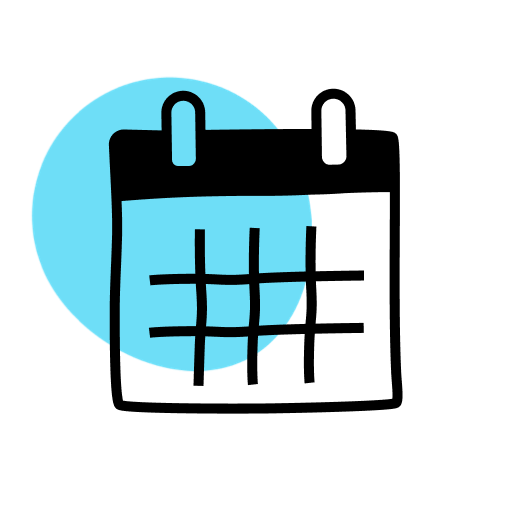
Accelerator runs from February 8th–April 4th
The registration deadline is February 7th; the same day as the kick-off social call. Content starts on February 12.
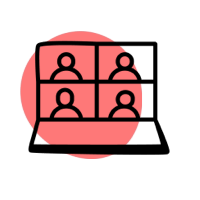
Weekly live calls to discuss and ask questions
Each week, join our community manager Heather and special guests to discuss the assignments and ask questions. Live calls are optional and are recorded for replay.
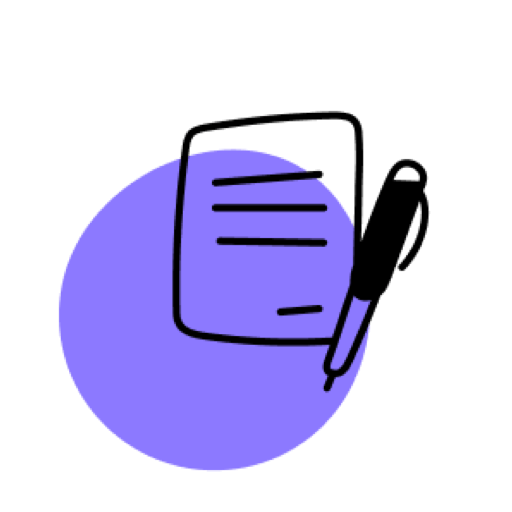
Complete the weekly assignment
Our accelerator keeps you on track toward completion with a mandatory weekly assignment. It keeps you on track and ensures that you're working to complete your goal.
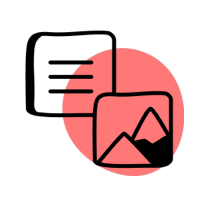
Access to extra accelerator-only content
In addition to the Community Business Blueprint course found inside the All-Access Pass, we'll also share some additional materials on the topics of onboarding mapping, engaging your community,and running learning cohorts—just like this accelerator.
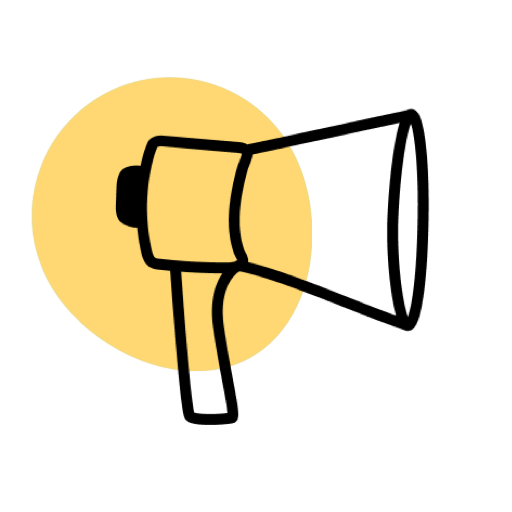
Earn official bragging rights
As part of the accelerator, you have the opportunity to earn a Credly digital credential in Digital Community Foundations, at no extra cost to you. Show off the new skills you've learned.
Created by the community experts at SPI and Circle
Community Business Blueprint is a collaboration between our team at SPI and the team at Circle, the platform we use to host our communities.
Circle is committed to helping businesses create thriving communities. We were thrilled to co-create this course with them.
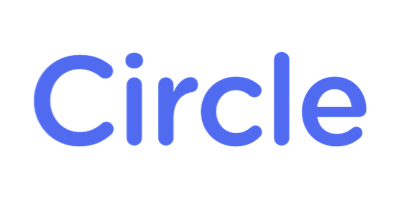
Community Business Blueprint course outline
Welcome, Students!
- Start Here
What Is Community
- Community as a Business Model
- Signs You Are Ready
Defining Your Community Purpose
- Why Do You Want to Launch a Community?
- Example Communities: What Is Their Why?
- Business Goal Alignment
Your Ideal Member
- Defining Your Ideal Member
- Testing & Validating Your Community Idea
Your Community Framework
- Community Model Refresher
- Support Framework
- Learning Framework
- Interest Framework
- Product Support Framework
The How: Community Programming
- Establishing a Programming Strategy
- Mapping your Community Structure
- Kickstarting Community Engagement
- Building Community the Sustainable Way
Pricing and Revenue
- Pricing Models
- Pricing Strategies
- Pricing Tactics
- Churn and CLTV
- Expansive Revenue
Charting Your Path Forward
- Your First Few Members (Launching)
- Thriving Communities Can Be Small
- Ask for Feedback
- Common Mistakes to Avoid
- Marketing Your Community
Final Thoughts
- Final Thoughts
We believe in community-driven courses
Save 16% with Annual billing


For established entrepreneurs
SPI Pro
$299
/ quarter
$999
/ year
You have an online business that’s up, running, and generating revenue. You’ve figured out a lot but are unsure where to focus next. And the growing pains are real.
Everything in the All-Access Pass community, plus:
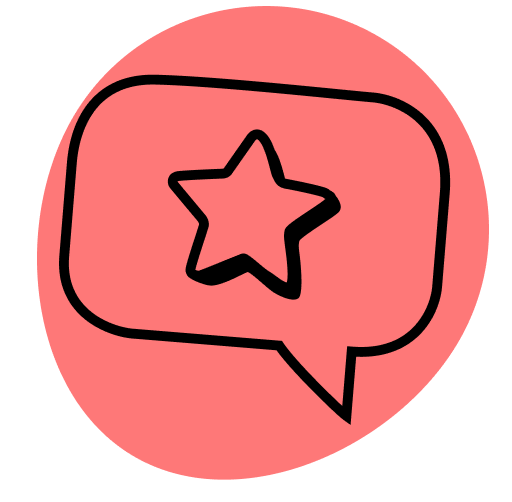
Vetted network of serious pros
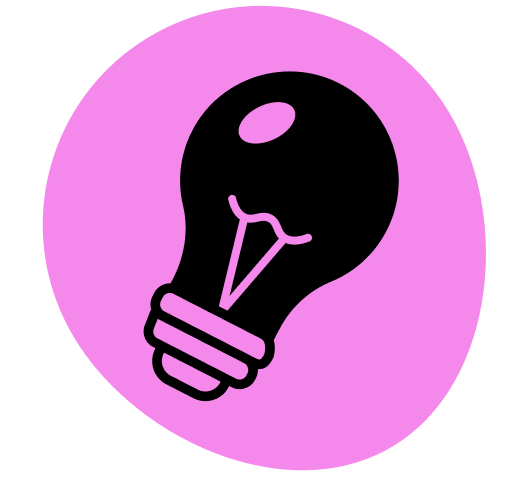
Curated member masterminds

Exclusive access to in-house experts
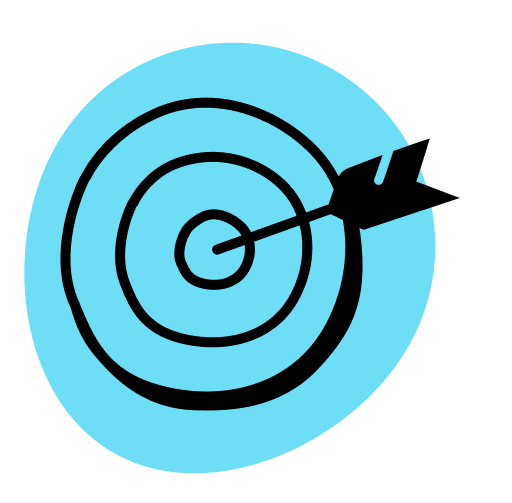
Strategic guidance & tools
“I love logging into Pro because I don’t feel like I’m alone anymore. To see so many other people out there working towards the same thing and supporting each other is amazing. And the community administration is amazing — the checking-in, the answers, the connecting — it’s brilliant. I hope that my community has some of the genie in the bottle that Pro has.”
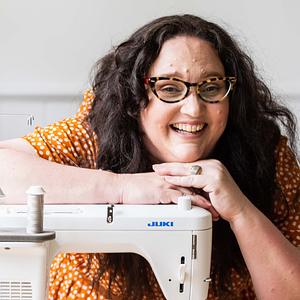

Ange Wilson

Not sure which membership is right for you?
or compare both plans so we can help you choose your path.
The post Community Business Blueprint appeared first on Smart Passive Income.
]]>Learn about SPI and the team here to help you SPI Media is dedicated to helping you become a stronger entrepreneur. Learn about our history and mission, and meet the team. About SPI Media SPI Media was born in 2020, the official marriage of two long-time businesses: Pat Flynn's Smart Passive Income website and Matt […]
The post About SPI appeared first on Smart Passive Income.
]]>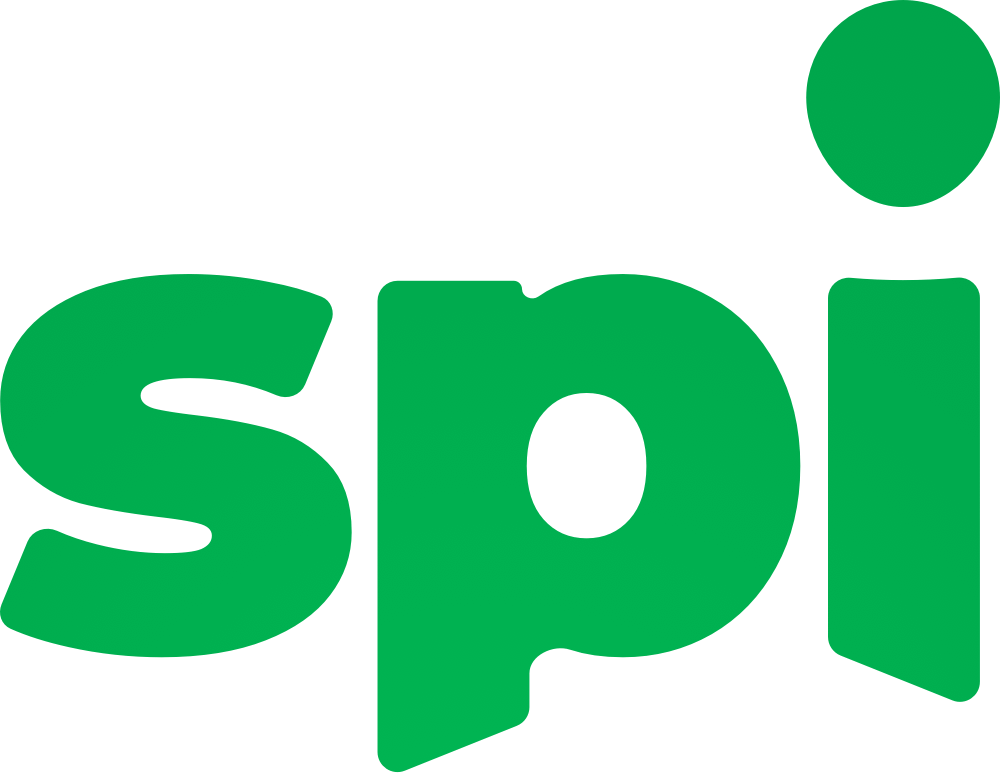
Learn about SPI and the team here to help you
SPI Media is dedicated to helping you become a stronger entrepreneur. Learn about our history and mission, and meet the team.
About SPI Media
SPI Media was born in 2020, the official marriage of two long-time businesses: Pat Flynn's Smart Passive Income website and Matt Gartland's Winning Edits creative agency. Want to learn more? Click below to read on.
How Smart Passive Income and Winning Edits came together
About Smart Passive Income
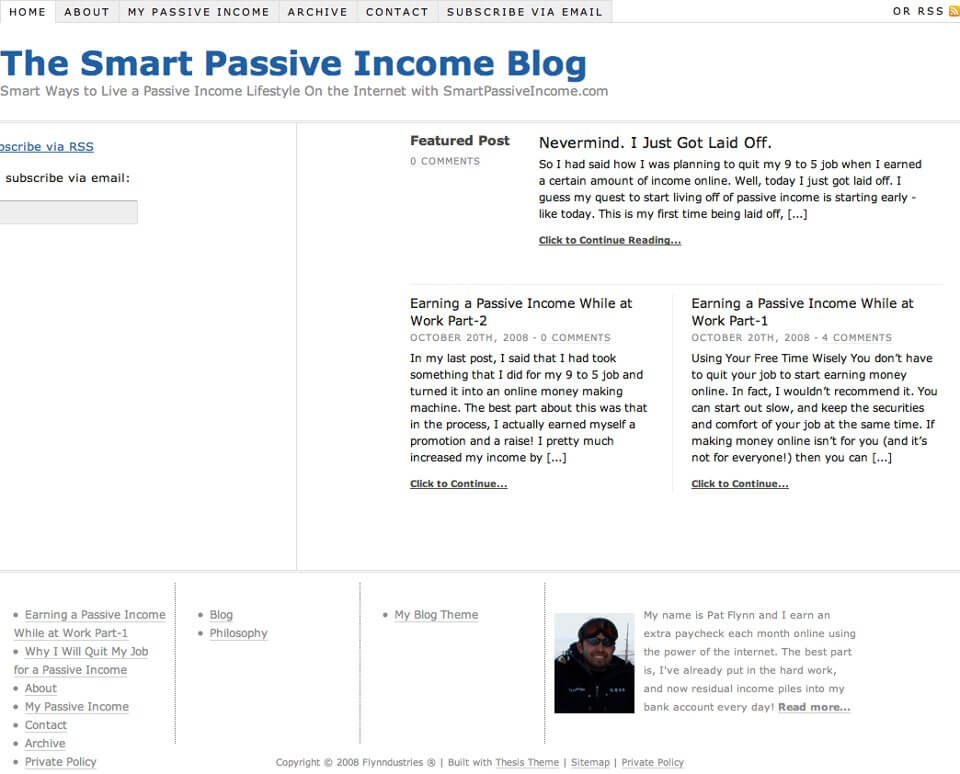
Pat Flynn started Smart Passive Income in 2008 to share what he had learned in the process of building a popular blog for an architecture industry exam. Ethical advice on how to monetize a blog was hard to come by, and Pat wanted to share the lessons he learned.
Transparency has always been at the heart of the SPI brand, with Pat becoming “the crash-test dummy of online business,” running experiments and sharing the results, whether they were positive or negative. Pat also began a monthly practice of publishing income reports, sharing totals for the income earned from each revenue stream, along with the expenses incurred to achieve that revenue. In an industry overrun with get-rich-quick schemes, Pat's was a mission of radical transparency. Readers hoping to start an online business gained a realistic understanding of the work involved, as well as the time and investment required to get started. The income reports were one of the Smart Passive Income site's most popular features and ran until 2017 when we determined that Pat's business was no longer representative of our average reader's business.

The Smart Passive Income Podcast with Pat Flynn launched in 2010 and has consistently been one of the most popular business podcasts, with over 80 million downloads since. The podcast has been instrumental in helping us serve a worldwide audience with the most powerful online business strategies.
Our north star at SPI has always been providing actionable, ethical business advice, whether through free content, books, courses, or now membership communities.
About Winning Edits

Matt Gartland started Winning Edits in 2011 as a creative agency for author entrepreneurs, specializing in all aspects of book production, including editing, design, and self-publishing support. Over time, the agency's services grew to support a wide variety of content production, including blogs, podcasts, and online courses. Winning Edits long served as Smart Passive Income's creative agency. Winning Edits has been the secret behind-the-scenes partner to many bestselling books and other transformational content in the entrepreneurial space.
One of Matt's true gifts is finding and developing talent, and Winning Edits grew to have a deep bench of creative, skilled staff. It was clear as time went on that for everyone on the Winning Edits team, Smart Passive Income was the favorite customer — a combination of enjoying Pat as a person, the commitment to ethical advice, and the wonderful Smart Passive Income audience. As Smart Passive Income grew, so too did the volume of its creative needs, setting the stage for the merger of these two organizations into a single brand: SPI Media.
The values that underlie everything we do at SPI
Mission
A mission is a company’s north star. It establishes a reason for being — a “why” we exist. All of our work is guided by this simple, empowering, unifying statement.
Our Mission: To elevate entrepreneurs to within reach of their dreams.
Vision
A vision is a direction, not a current-state reality; it's something we work to achieve. Our vision is informed by the mission and describes that mission in precise, actionable terms.
Our Vision: SPI is a trusted learning and development ecosystem that serves a worldwide community of online entrepreneurs. The community is alive with individuals and teams from all walks of life and at all stages of their entrepreneurial journeys bonded by a common cause: to build purpose-driven and profitable businesses they can be proud of. SPI empowers its community members to take action toward achieving their goals by providing best-in-class educational content, community-building opportunities, and training experiences. SPI also partners with other industry experts to develop and champion useful resources that further enable its mission.
Core Values
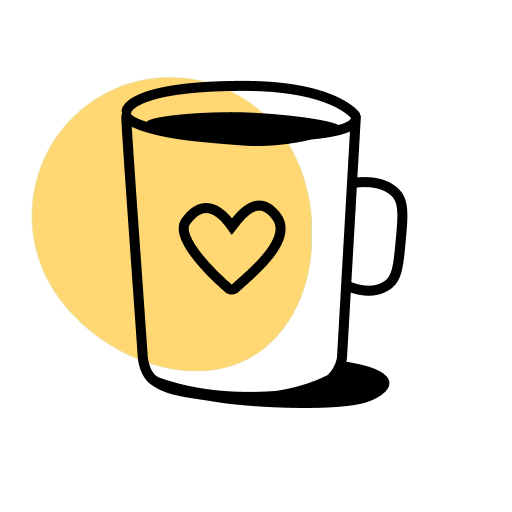
Be Kind, No Exceptions
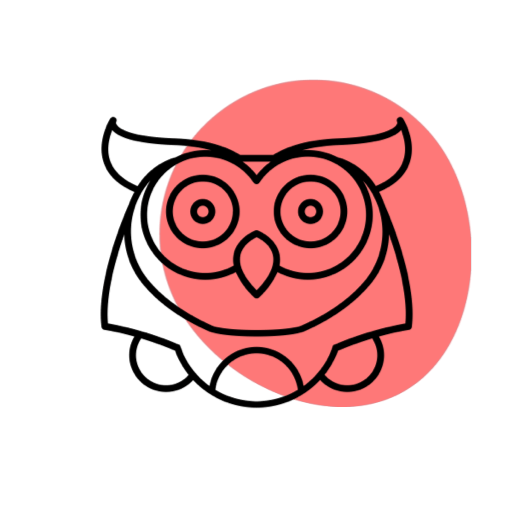
Give a Hoot
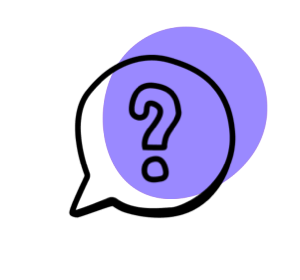
Learn from Everything
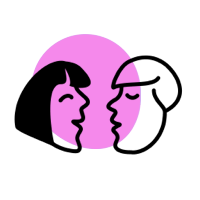
Bring together, stay together
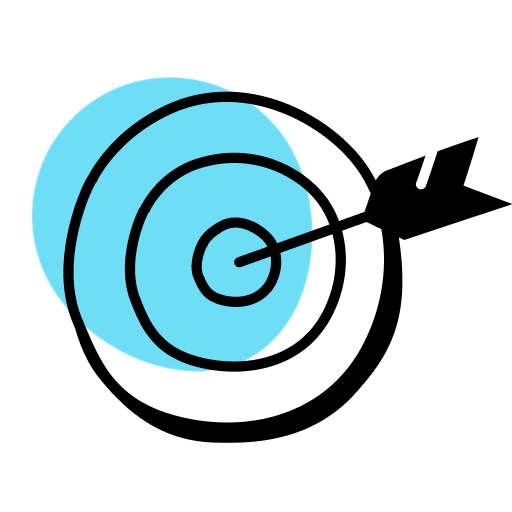
Deliver on Your Promises
Meet Team SPI
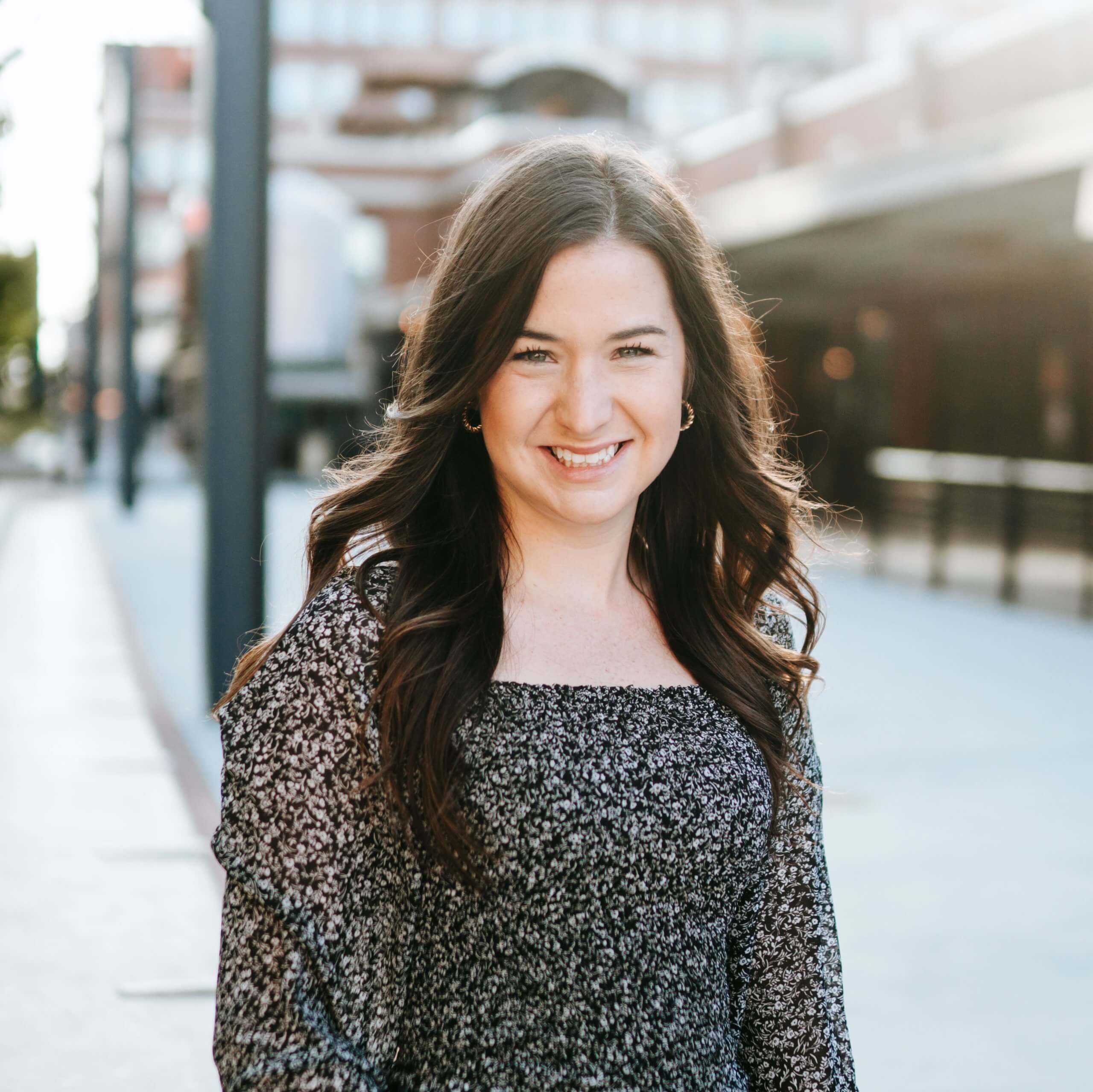
Ashley Gore
Community Experience Manager,
SPI Academy

David Grabowski
Editorial Manager

David Masnato
Community Experience Manager,
SPI Pro
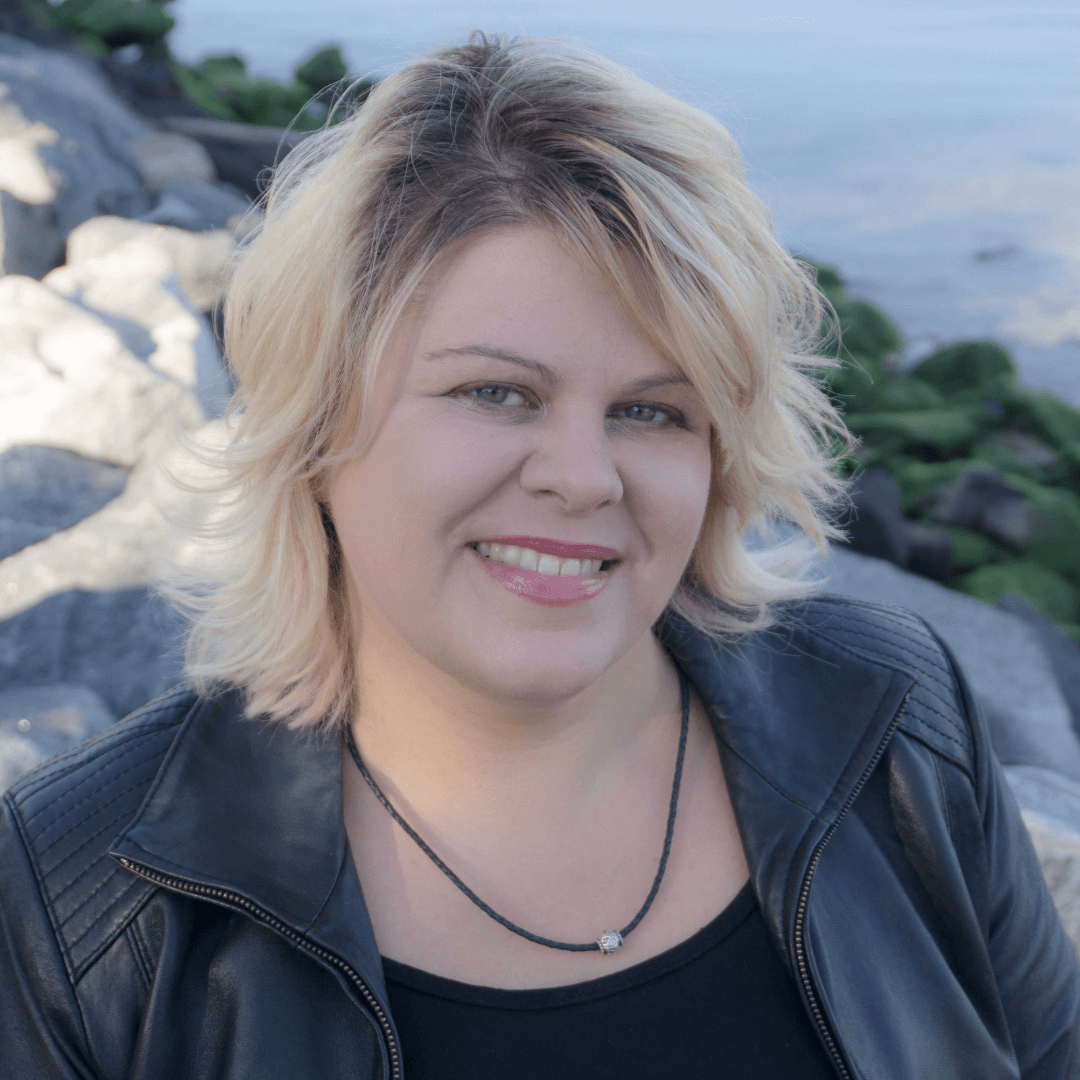
Heather Angel
Community Experience Manager,
Experts in Residence
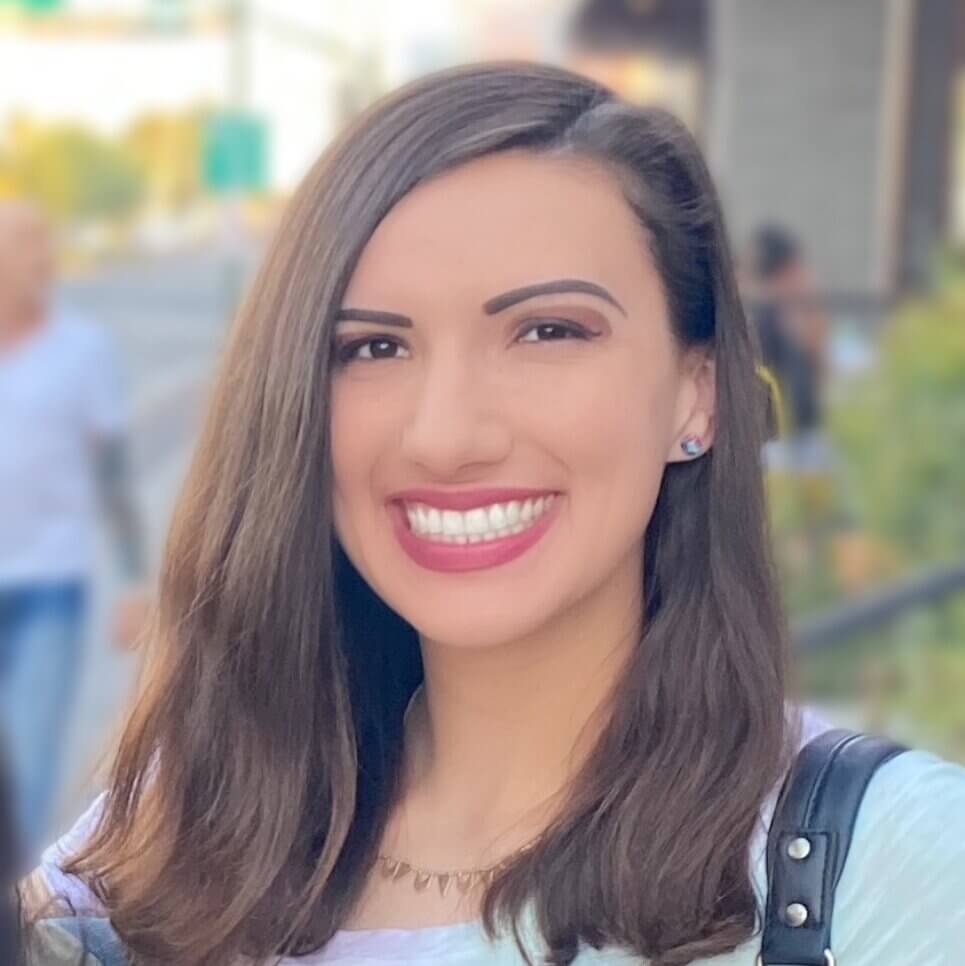
Kelsey Bressie
Marketing Coordinator
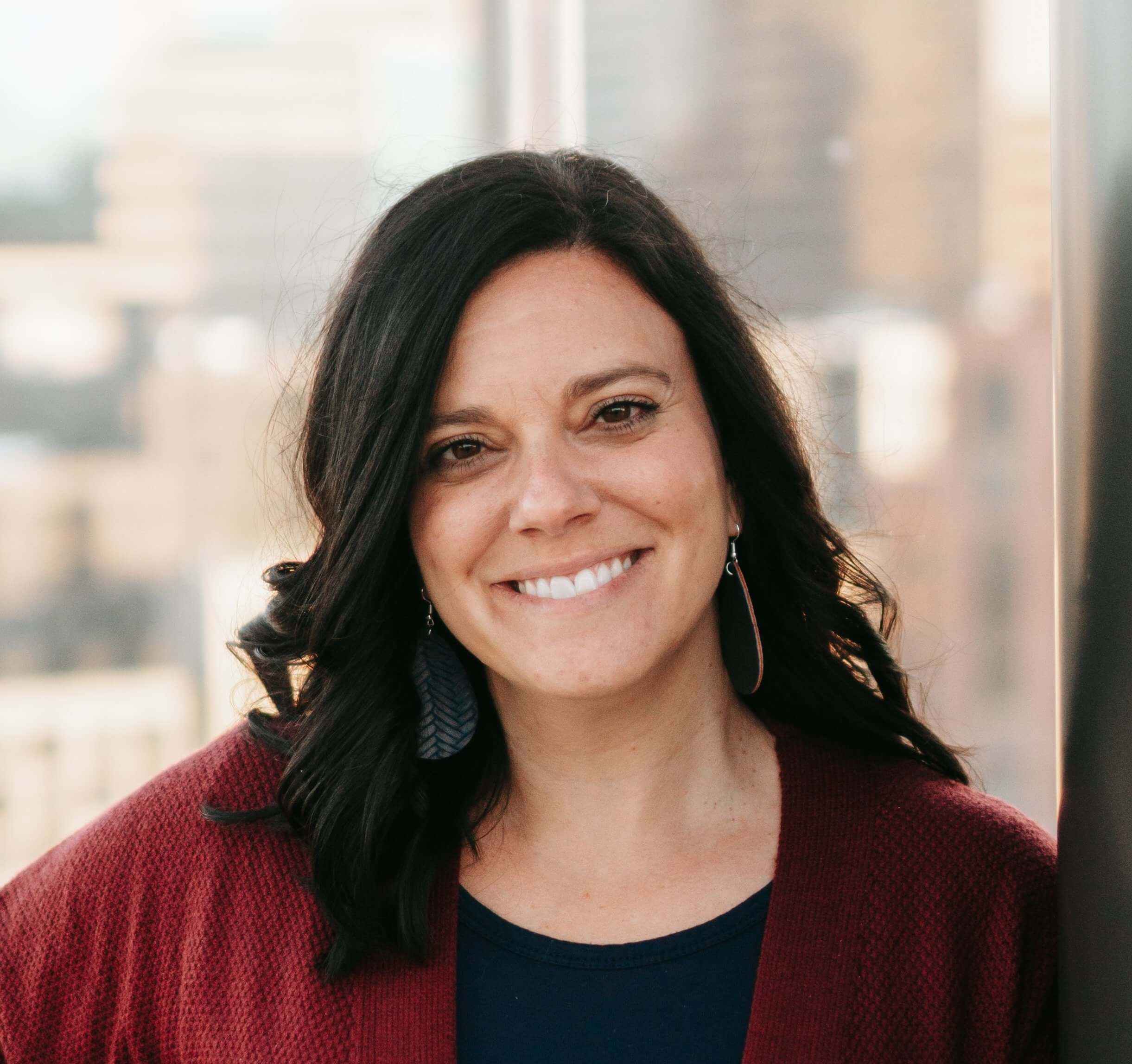
Kristen Campbell
Associate General Manager

Matt Gartland
Chief Executive Officer
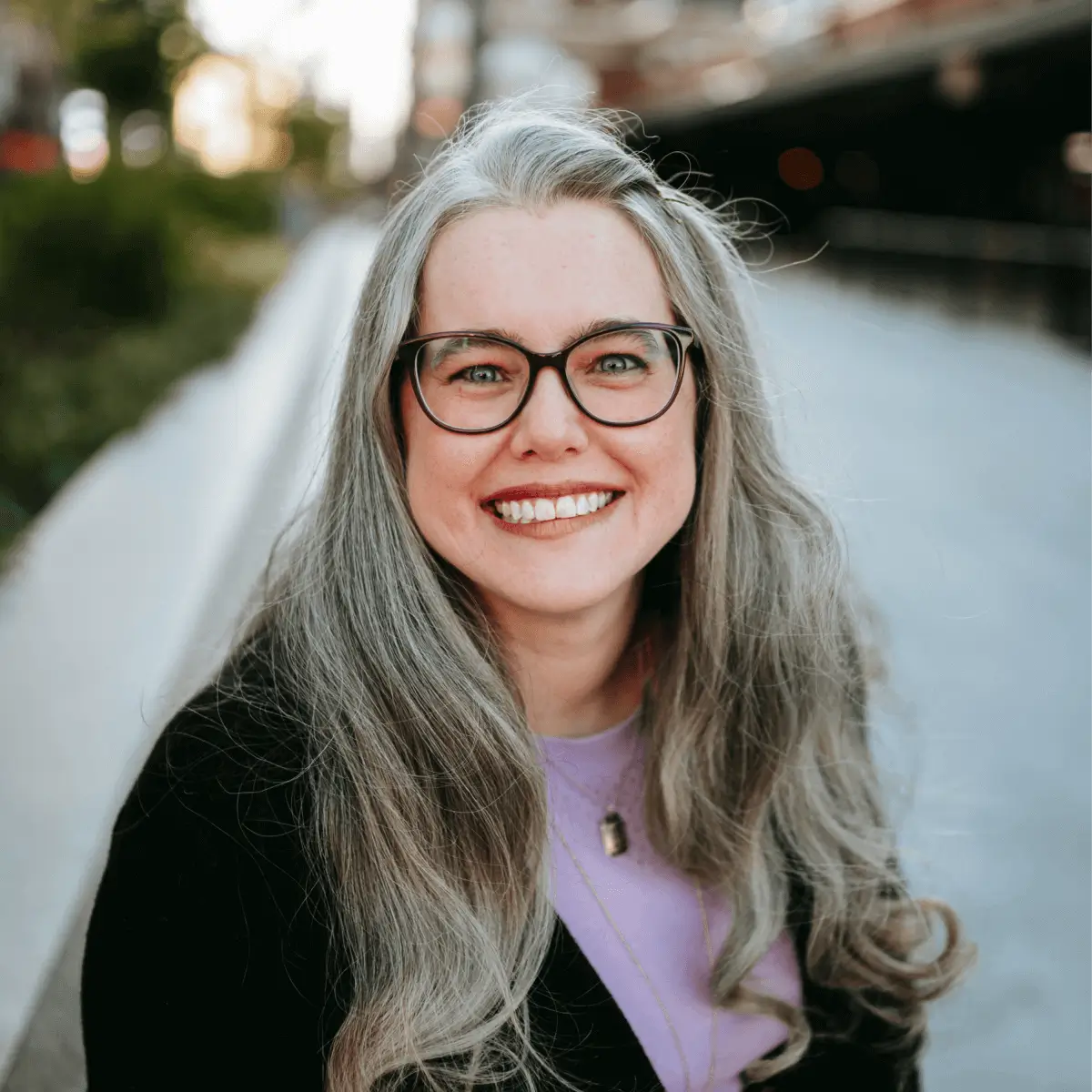
Mindy Peters
Director of Data and Technology

Pat Flynn
Founder
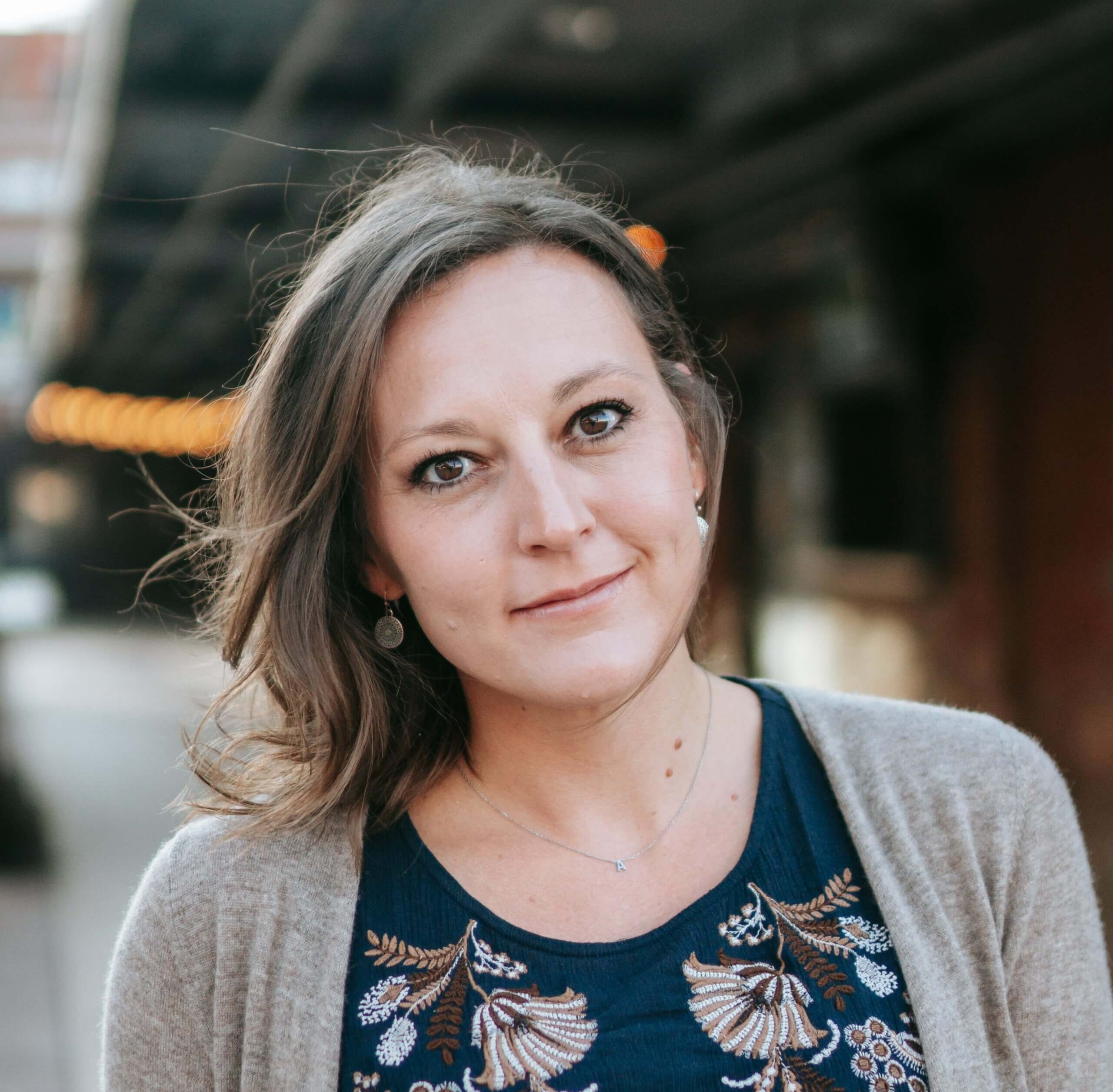
Sandy Mann
Director of Marketing
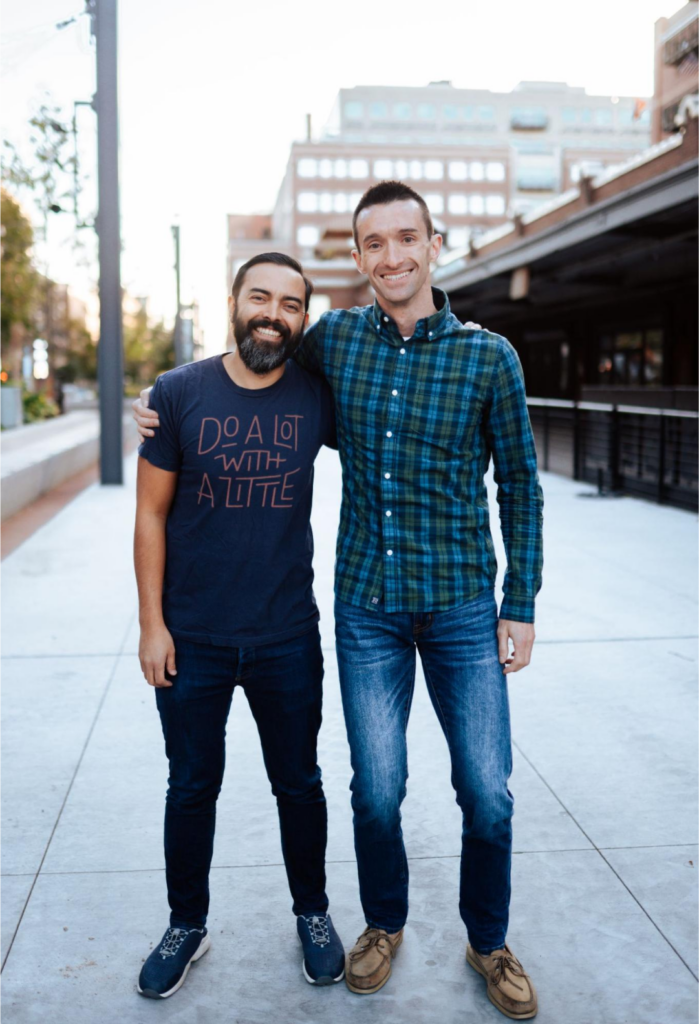
Community is at the heart of everything we do
Hey, hi, hello! We’re Pat and Matt, the two entrepreneurs behind SPI. To us, community is more than a buzzword. It’s our purpose and our business model.
Pat created SPI back in 2009 — this was at the beginning of what we now call the “creator economy.” SPI quickly became one of the best places to learn the ropes of being an online entrepreneur. Since then, SPI has grown to an audience of over 130,000.
Matt joined forces with Pat at the end of 2018. He led the charge to create SPI Pro — our first community, which launched in 2020. To date, we’re proud to serve and support over 1,200 entrepreneurs committed to finding success on their terms.
We’ve lived the journey you’re on now. It’s thrilling. It’s hard. It’s worth it. Keep going. And if you like, let us (with our team and community of peers and experts) help you. We’re in this together.
The post About SPI appeared first on Smart Passive Income.
]]>Email Marketing Magic Part of the All-Access Pass course library. Learn how to polish your email strategy to engage more readers, make more sales, and grow your brand. Learn what to write and when to send it Do your email newsletters take a ton of time, give you a ton of anxiety, and honestly, don't […]
The post Email Marketing Magic appeared first on Smart Passive Income.
]]>Email Marketing Magic
Part of the All-Access Pass course library. Learn how to polish your email strategy to engage more readers, make more sales, and grow your brand.
Learn what to write and when to send it
Do your email newsletters take a ton of time, give you a ton of anxiety, and honestly, don't get many opens? Let's change that.
Pat Flynn will teach you exactly what emails to send, to whom, and at what time to help you get more engagement—and eventually more sales. Instead of worrying about unsubscribes and people who complain about you sending emails, you're going to get thanked by your readers for sending them!
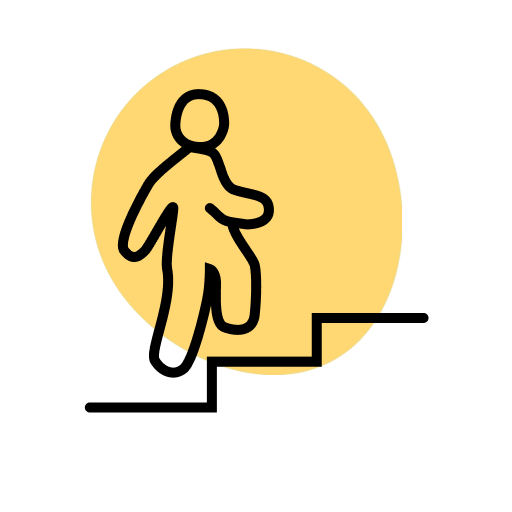
Start at the beginning
We start from the beginning to set you up for success. Even if you have an email list already, most people overlook some key items that affect how emails show up in people’s inboxes (or even if they show up at all).

Clear action items
At the end of each lesson, Pat gives you a very clear, very manageable action item—your assignment for the lesson. This makes sure that you are making steady, ongoing progress and that you start seeing results right away.
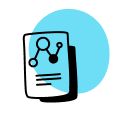
Go beyond the basics
Gain a professional-level understanding of who is on your list, and how to talk directly to them instead of just “blasting” messages to everyone. Pat will teach you which tools play a part in email marketing success, and then demonstrate step-by-step how to use them.
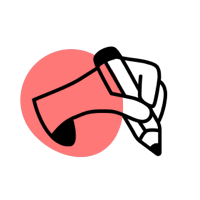
You don't have to be a great writer
Don't fret if your writing skills aren't strong. We’ve included all kinds of email templates that you can use in different parts of your business. Just copy and paste so that you can move on.
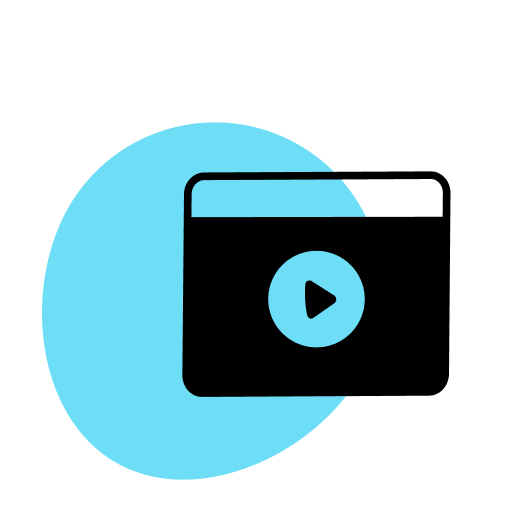
Easy-to-follow video tutorials
Walk you through the entire process with step-by-step videos, so that even if you’re the most technologically challenged person in the world, you’ll be able to get things done.

Learn what makes your audience happy
Instead of worrying about unsubscribes and people who complain, you’ll learn how to send emails your audience actually WANTS to read, even if you’re selling something.

Focus on simplicity over complication
Email marketing can turn into a giant complicated nightmare, but that does no one any good. Learn to leverage the strategies that give you the biggest ROI with the least amount of overwhelm. This isn’t push-button easy, but we simplify and reduce the overwhelm as much as possible so that you can finally take action and make emails work for you.
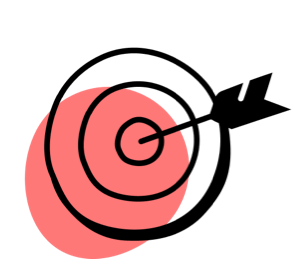
Advice that grows with you
As your business expands, you can venture into the more advanced areas of the course, such as lessons on segmentation or how to use advanced tools like RightMessage, to help you take growth, monetization and automation to new levels.
Learn to use ConvertKit
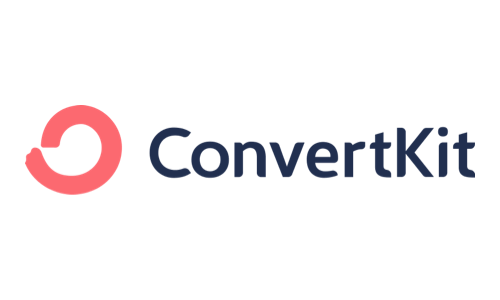
ConvertKit is our favorite email service provider—it strikes a balance between intuitive usability and powerful automation. All step-by-step videos in the course use ConvertKit. You don't have to use ConvertKit to succeed with this course, but we highly recommend it.
[Full disclosure: SPI founder Pat Flynn is a compensated advisor and SPI Media is an affiliate for ConvertKit.]

Meet Your Course Instructor
Hi, I’m Pat Flynn. If you’re an entrepreneur, podcaster, YouTuber, blogger, course instructor, consultant, coach, author or any other creator who is building an audience, I can help.
Ever since I was let go from my architecture job in 2008, I’ve run my own businesses, and it didn’t take long for me to realize just how important email marketing was to the equation of building a successful business.
In fact, I’ve gotten to become so obsessed with email, that I actually became an advisor to an email marketing company, ConvertKit, in 2014. Since then, it’s become an even bigger focus of mine, and on SmartPassiveIncome.com, it’s no longer just me – I have a whole team of people whose focus is delivering value through email so that we can help the most people possible.
I’ve generated a few million dollars online since 2008, and I can safely say that email marketing has had to do with almost all of that income. I’m excited to share with you what works, and what doesn’t, and help you finally get a grasp on this thing that most people try to avoid. It can make all the difference.
Email Marketing Magic Course Outline
Welcome, Students!
- Welcome! Watch This First
- Office Hours
Part 1 / Module 1: Setup and Foundation
- Welcome to Part 1 – Module 1!
- Lesson 01: 100 Emails Challenge
- Lesson 02: Get Your ConvertKit Account Started
- Lesson 03: 3 Things to Make Sure You Do First
- Lesson 04: Basic Email Terms and Definitions (Overview)
- Lesson 05: Importing an Existing Email List
- Lesson 06: The Design and Voice of Your Emails
- You've Completed Your Foundations Module!
Part 1 / Module 2: Optimizing Entry Points
- Welcome to Module 2!
- Lesson 01: Create Forms that Convert
- Lesson 02: Build Great Landing Pages
- Lesson 03: Make Better Lead Magnets
- Lesson 04: Select Your “Signature Lead Magnet”
- Lesson 05: Create Content Upgrades that Convert
- Lesson 06: Customizing Thank You Pages that Rock
- You've Completed Optimizing Your Entry Points!
Part 1 / Module 3: Grow Your List
- Welcome to Module 3!
- Lesson 01: Audit Your Website
- Lesson 02: Collect Emails from a Podcast
- Lesson 03: Collect Emails from a YouTube Video
- Lesson 04: Earn Email Subscribers from Guest Appearances
- Lesson 05: Radically Grow Your List with Webinars
- Lesson 06: Create a Challenge that Moves People
- Lesson 07: Start a Viral Contest that Converts into Emails
- Lesson 08: Understanding How Paid Promotion Fits Into This
- You've Completed Learning How to Grow Your List!
Part 1 / Module 4: What to Send
- Welcome to Module 4!
- Lesson 01: Broadcast Emails
- Lesson 02: Autoresponder Emails
- Lesson 03: Newsletters and Nurture Sequences
- Lesson 04: The ABC (Email Template) Bank – Introduction
- Lesson 05: WHEN to Send Emails
- You've Completed Learning What to Send!
Part 1 / Module 5: Optimizing Your Emails
- Welcome to Module 5!
- Lesson 01: Increasing Open Rates
- Lesson 02: Increasing Click-Through Rates
- Lesson 03: Increasing Deliverability (Emails that Actually Reach the Inbox)
- Lesson 04: Purge and Clean Your List
- Lesson 05: Enhancing the Subscriber Experience
- You've Completed PART 1!
Part 2 / Module 1: Tagging and Segmentation
- Welcome to Part 2 – Module 1!
- Lesson 01: What Is Tagging and Segmentation?
- Lesson 02: Discover Your Sub-Audiences
- Lesson 03: Tagging and Segmenting Customers
- Lesson 04: Using Tags Inside Your Email Copy
- You've Completed Learning about Tagging and Segmentation!
Part 2 / Module 2: Integrations
- Welcome to Module 2!
- RightMessage
- Teachable
- LeadPages
Part 2 / Module 3: Automation
- Evergreen Marketing Campaigns (Special Guest)
ABC Bank – AUTORESPONDERS
- The Quick Win (1 Email)
- Your Not So Perfect Story (1 Email)
- Tip of the Iceberg (1 Email)
- I Once Was Lost… (1 Email)
- Go get a REAL job (1 Email)
ABC Bank – BROADCASTS
- Webinar Replay Email
ABC Bank – CAMPAIGNS
- Product Launch Series (5 Day)
- Webinar Lead-Up Series (Post Registration)
We believe in community-driven courses
Save 16% with Annual billing

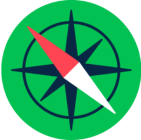
For Early-Stage Entrepreneurs
All-Access Pass
$199
/ quarter
$599
/ year
You are in the early days of your business. You’re tired of learning alone. You want to meet other people like you. And you want to avoid common mistakes along the way.
Included with your pass:
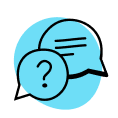
Live AMAs
with Experts
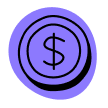
Guided
Accelerators

ALL Courses
($6k+ value)
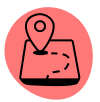
Instant Network of
Like minded Peers
“The SPI All-Access Pass has provided me with a fresh perspective on small business and entrepreneurship, opening my eyes to a whole new approach. It's not just a membership; it has revolutionized my mindset, approach, and strategic thinking. With exclusive courses, live events, and a supportive community of like-minded entrepreneurs, it goes beyond a typical membership.”


Tina Cheesley

For Established Entrepreneurs
SPI Pro
$299
/ quarter
$999
/ year
You have an online business that’s up, running, and generating revenue. You’ve figured out a lot but are unsure where to focus next. And the growing pains are real.
Everything in the ALL-ACCESS PASS community, plus:

Vetted Network of Serious Pros

Curated Member Masterminds

Exclusive Access to In-House Experts

Strategic Planning Guidance & Tools
“I love logging into Pro because I don’t feel like I’m alone any more. To see so many other people out there working towards the same thing and supporting each other is amazing. And the community administration is amazing — the checking-in, the answers, the connecting — it’s brilliant. I hope that my community has some of the genie in the bottle that Pro has.”


Ange Wilson

Not sure which membership is right for you?
or compare both plans so we can help you choose your path.
The post Email Marketing Magic appeared first on Smart Passive Income.
]]>A to Z Webinars Part of the All-Access Pass course library. Grow your list. Increase trust. Make more money. Become a Webinar Rockstar with A to Z Webinars Introducing A to Z Webinars, a complete framework for creating, promoting, and delivering engaging webinars that help you grow your business. This course will not just help […]
The post A to Z Webinars appeared first on Smart Passive Income.
]]>A to Z Webinars
Part of the All-Access Pass course library. Grow your list. Increase trust. Make more money.
Become a Webinar Rockstar with A to Z Webinars
Introducing A to Z Webinars, a complete framework for creating, promoting, and delivering engaging webinars that help you grow your business. This course will not just help you run great webinars, but help you generate more revenue, too—even if you’re not good in front of the camera or afraid of selling.
If we’ve learned anything from running SPI since 2008, it's this:
The success of your entire business depends on creating a genuine connection with your audience.
People only buy from people they know, like, and trust, regardless of whether it’s online or in-person. But here’s the problem—it’s hard to create a genuine connection with your audience online!
Most of the methods people use, like blogging, posting regularly on Instagram, or creating a YouTube channel, can work well, but they’re incredibly time-consuming, and they don’t always directly grow your business.
So how do you build a relationship with your audience through the internet AND effectively grow your business at the same time?
With webinars and virtual workshops.
A to Z Webinars teaches you…
The mindset to win at hosting webinars
A successful webinar starts way before you go live. It starts right now, at the beginning. Getting into the right mindset and planning out your presentation will make all the difference when it’s time to go live. Learn to present in a way that’s compelling, engaging, and leaves your audience wanting more.
A to Z Webinars teaches you…
A technical tutorial for all stages
Webinars aren’t push-button easy! I’ll show you the different equipment and software you need to run a smooth training that both you and your audience will enjoy. I'll also walk you through my trusty pre-webinar tech checklist and show you my setup during the webinar. You’ll learn how to keep people engaged and how to deal with the unexpected. You'll also learn how to “evergreen” the webinar, repurposing the content so that it can live on.
A to Z Webinars teaches you…
A plan for promotion and selling
Your registration process matters. You’ll learn how to set up registration, as well as strategies for successfully promoting your webinar across your content platforms. During the webinar is one of your best opportunities for selling, but only if you treat your audience right. Learn how to weave your sales message throughout your presentation so it feels natural and compelling, without coming across pushy or too salesy.
More than just a single course
A to Z Webinars is part of SPI's All-Access Pass, a supportive community of learners designed to help you actually do the work. We achieve this through our combination of exclusive live events designed to give you real-time help from and connection to other entrepreneurs, asynchronous messaging in the community, and access to our entire course library.

Meet Your Course Instructor
Hi, my name is Pat Flynn and my business runs on webinars and virtual meetings.
But hosting webinars wasn’t always second nature. I didn’t know the first thing about teaching my knowledge online. I was flying blind, like so many of us are forced to do.
But over the years, I’ve come to not only enjoy webinars (and get good at them) but also rely on them in my business.
Hosting engaging, valuable, and compelling webinars has allowed me to build trust, grow my list, and sell my products without being sleazy or manipulative.
In this brand new course, A to Z Webinars, I’ll teach you how to create, promote, and run webinars and virtual workshops that grow your list, increase trust, and help you make more money.
I’ve created A to Z Webinars because I want to show you how everything I have learned, and how you can make webinars and virtual trainings can work for you, too.
This isn’t a course about what worked for me years ago. I will show you exactly what I am doing TODAY in my business to get the results I want.
A to Z Webinars Course Outline
Welcome, Students!
- Welcome! Watch This First
- Office Hours
- Course Downloads
Module 1: The Mindset to Win with Webinars
- Welcome to Module 1
- Lesson 01: Why Webinars Work
- Lesson 02: 9 Ways to Use Webinars in Your Business and Brand
- Lesson 03: The #1 Mistake People Make When Starting Webinars
- Lesson 04: Planning Your Next Webinar
Module 2: Equipment and Software
- Welcome to Module 2!
- Lesson 01: Video Equipment
- Lesson 02: Audio Equipment
- Lesson 03: Presentation Software
- Lesson 04: Webinar and Workshop Software
- Lesson 04.1 Demio Demo
- Lesson 04.2 Zoom
- Lesson 05: Email Marketing Software
Module 3: Pre-Webinar Setup
- Welcome to Module 3!
- Lesson 01: What You Need Before You Setup Your Webinar
- Lesson 02: Setting Up a New Webinar on Demio
- Lesson 02.1 Setting Up a Webinar on Zoom
- Lesson 03: Customizing Your Webinar to Make It Great
- Lesson 04: Creating Reminder Emails
Module 4: How to Promote Your Webinar
- Welcome to Module 4!
- Lesson 01: Your Registration Page and Share Link
- Lesson 02: Your Email List
- Lesson 02.1 Email Walkthrough
- Lesson 03: Your Content Platforms
- Lesson 04: Social Media
Module 5: Preparing Your Presentation
- Welcome to the Recipe Book!
- Lesson 01: Where Do We Begin?
- Lesson 02: Outlining Your Presentation
- Lesson 03: Preparing Your Slides
- Lesson 04: Engagement Opportunities
Module 6: Going Live—Everything You Need to Know
- Welcome to Module 6!
- Lesson 01: Tech Checklist Before Going Live
- Lesson 02: How to Start a Live Webinar
- Lesson 03: Tips to Keep People Watching
- Lesson 04: What to Expect During the Presentation
- Lesson 05: The Best Way to Practice
- Lesson 06: How to Record Your Webinars for Later
Module 7: How to Sell on Your Webinar (WIthout Being Sleazy)
- Welcome to Module 7!
- Lesson 01: The Mindset of a Successful Selling Webinar
- Lesson 02: The First Five Minutes
- Lesson 03: The Middle of the Presentation
- Lesson 04: The Pitch at the End
- Lesson 05: Scarcity and Bonuses
- BONUS LESSON: The Power of Deadlines (Guest Interview)
Module 8: How to Follow Up After a Webinar Is Over
- Welcome to Module 8!
- Lesson 01: Checking Your Analytics and What's Important
- Lesson 02: Setting Up a Replay to Send Out
- Lesson 03: Email Follow-Up Sequence (No Selling)
- Lesson 04: Email Follow-Up Sequence (with Selling)
Module 9: How to “Evergreen” Your Webinar
- Welcome to Module 9!
- Lesson 01: What Can You Do with Your Recording?
- Lesson 02: Where to Find Your Recording and Where to Put It
- Lesson 03: Including Your Webinar in an Automated Funnel with Urgency
Module 10: Moving Forward
- A Final Message about Webinars
BONUS Section: How to Use Facebook Ads to Promote Your Webinar
- Basics: Using Facebook to Get More Attendees
- Using Ads to Help Sell More (with Examples)
We believe in community-driven courses
Save 16% with Annual billing


For established entrepreneurs
SPI Pro
$299
/ quarter
$999
/ year
You have an online business that’s up, running, and generating revenue. You’ve figured out a lot but are unsure where to focus next. And the growing pains are real.
Everything in the All-Access Pass community, plus:

Vetted network of serious pros

Curated member masterminds

Exclusive access to in-house experts

Strategic guidance & tools
“I love logging into Pro because I don’t feel like I’m alone anymore. To see so many other people out there working towards the same thing and supporting each other is amazing. And the community administration is amazing — the checking-in, the answers, the connecting — it’s brilliant. I hope that my community has some of the genie in the bottle that Pro has.”


Ange Wilson

Not sure which membership is right for you?
or compare both plans so we can help you choose your path.
The post A to Z Webinars appeared first on Smart Passive Income.
]]>